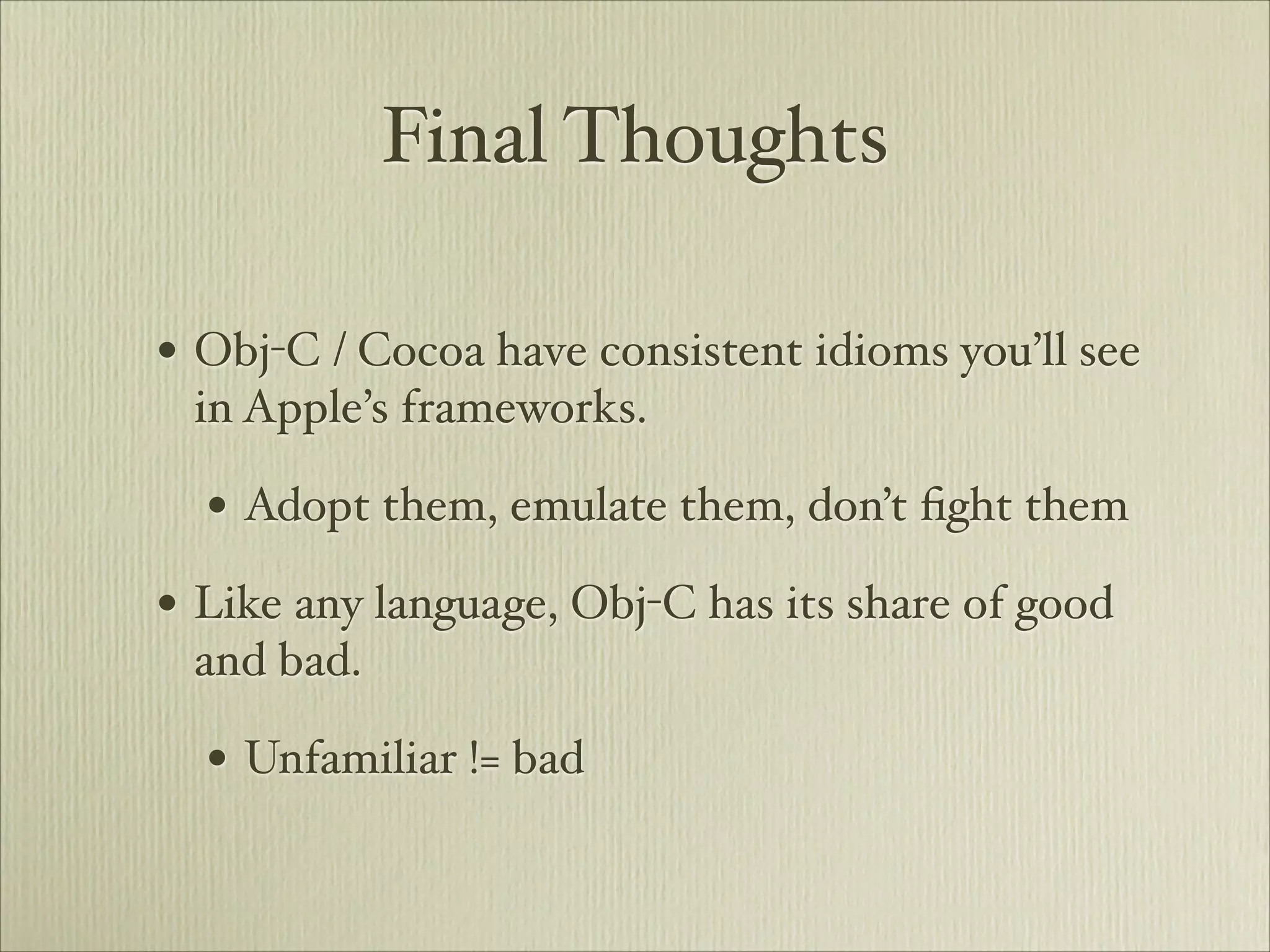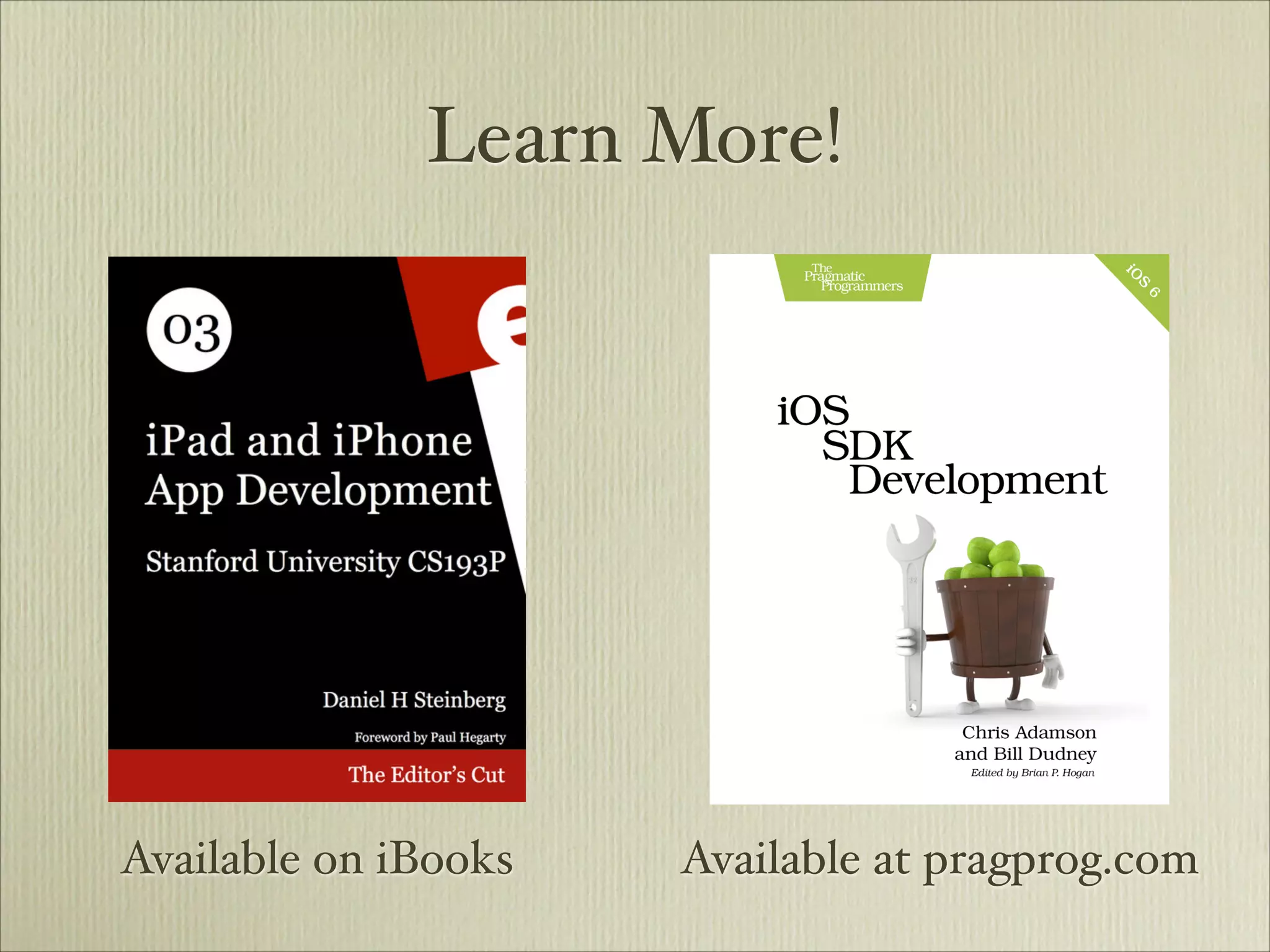The document provides an overview of writing idiomatic Objective-C code. It discusses key Objective-C concepts like classes, methods, memory management with ARC, properties, protocols, threading with GCD, blocks, and common design patterns used in Apple's frameworks like MVC, target-action, KVC, and delegation. It emphasizes adopting Apple's conventions for naming, file organization, and other practices to write code that fits with Cocoa frameworks.
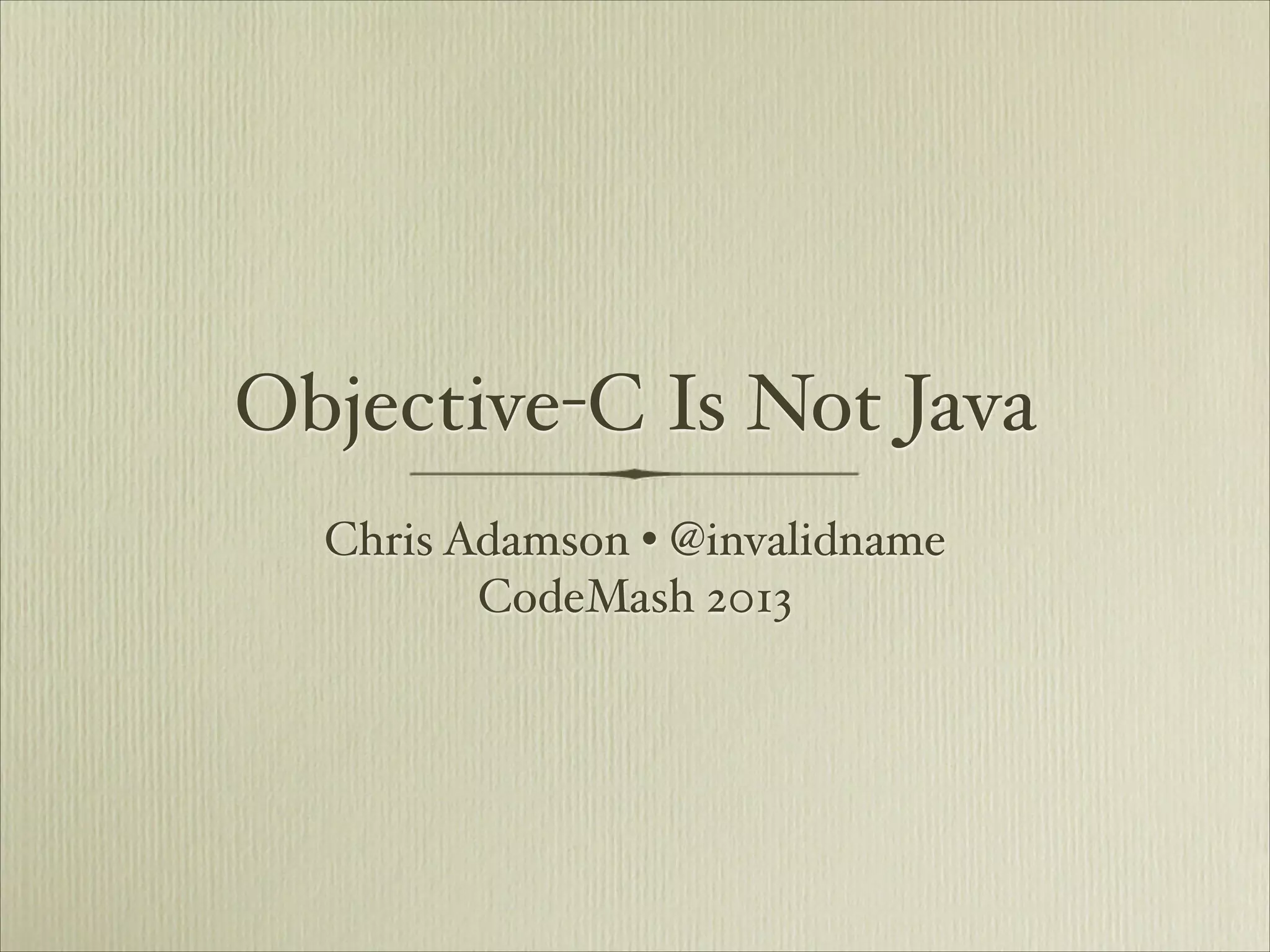
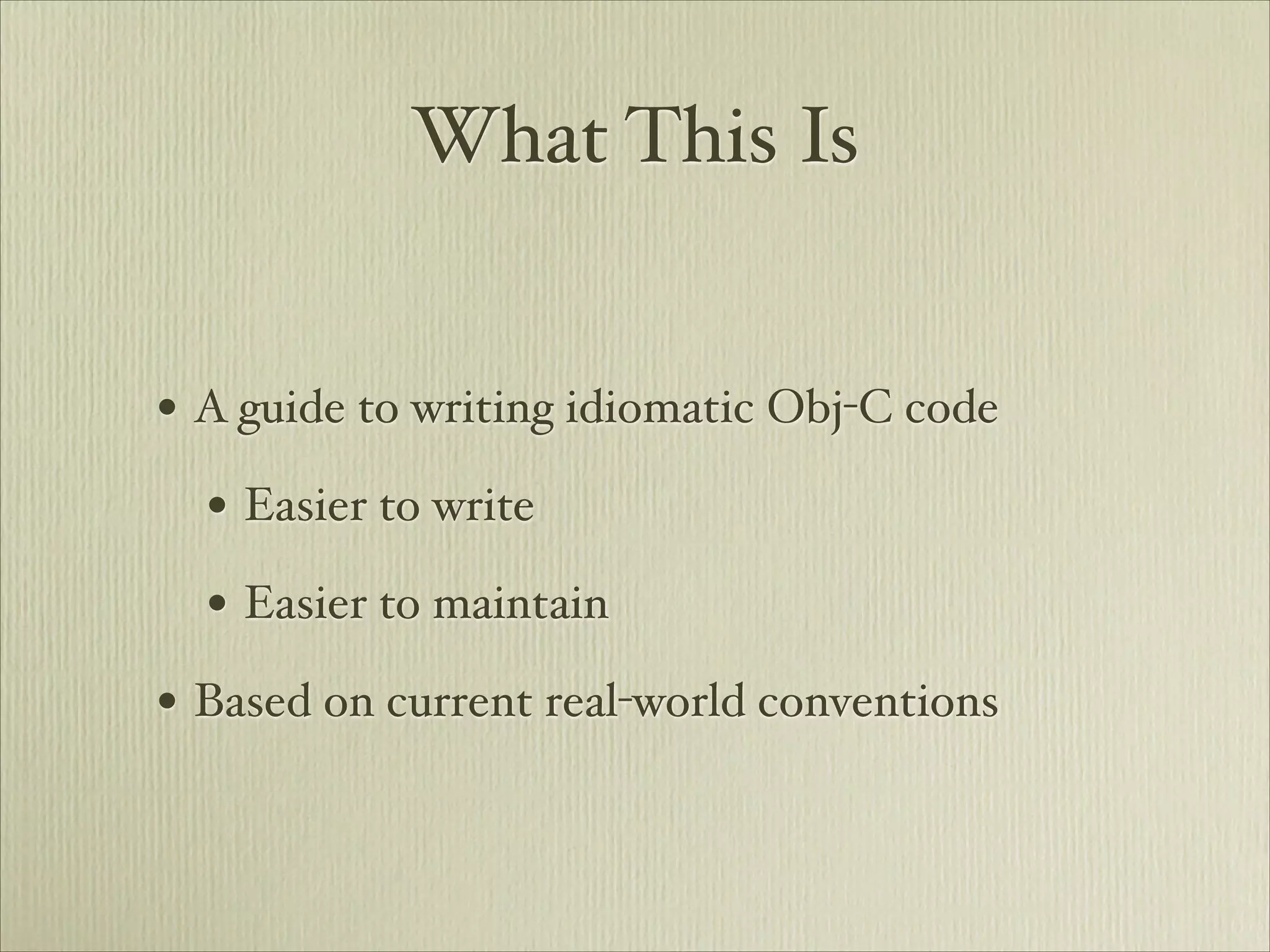
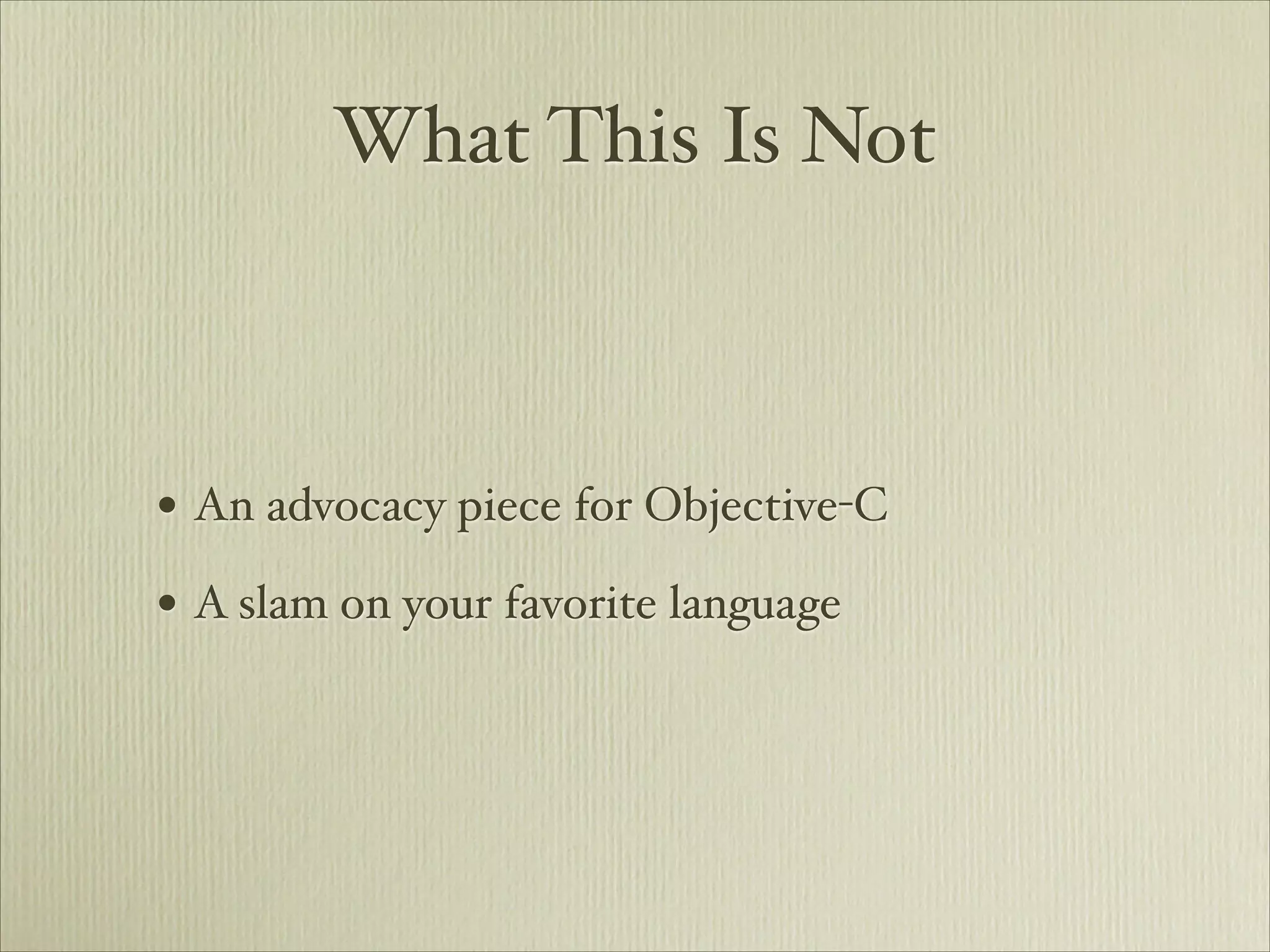
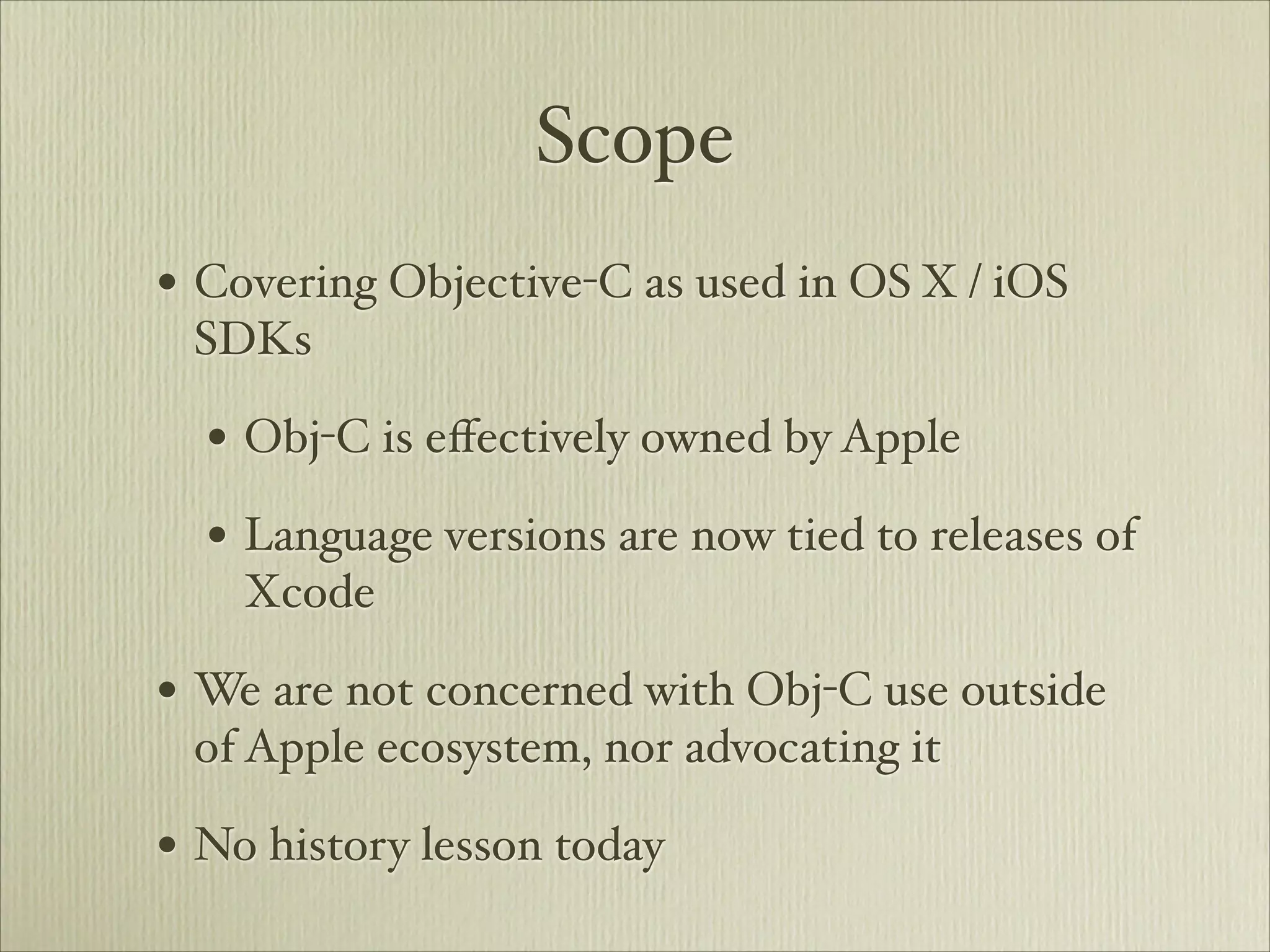
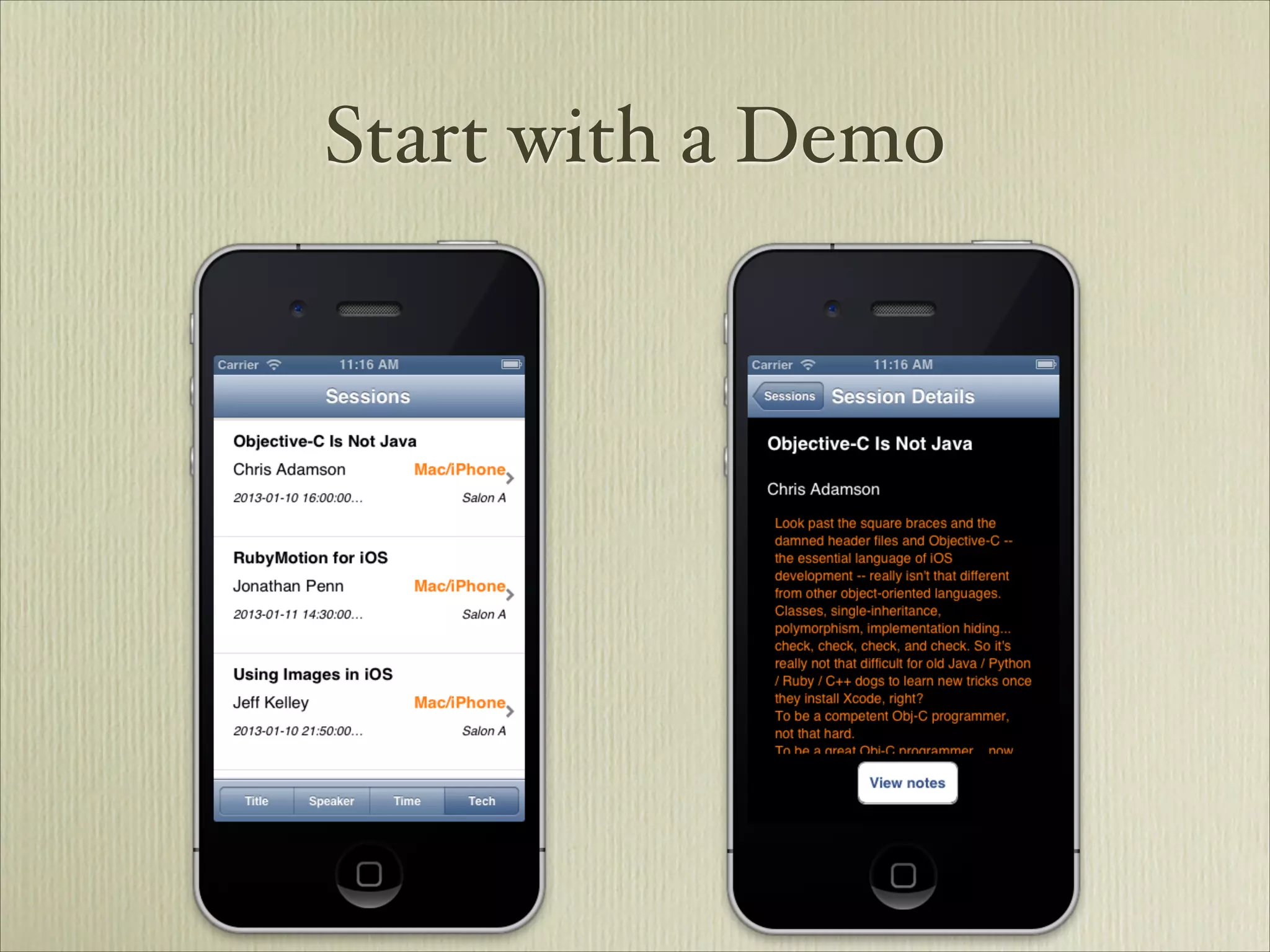
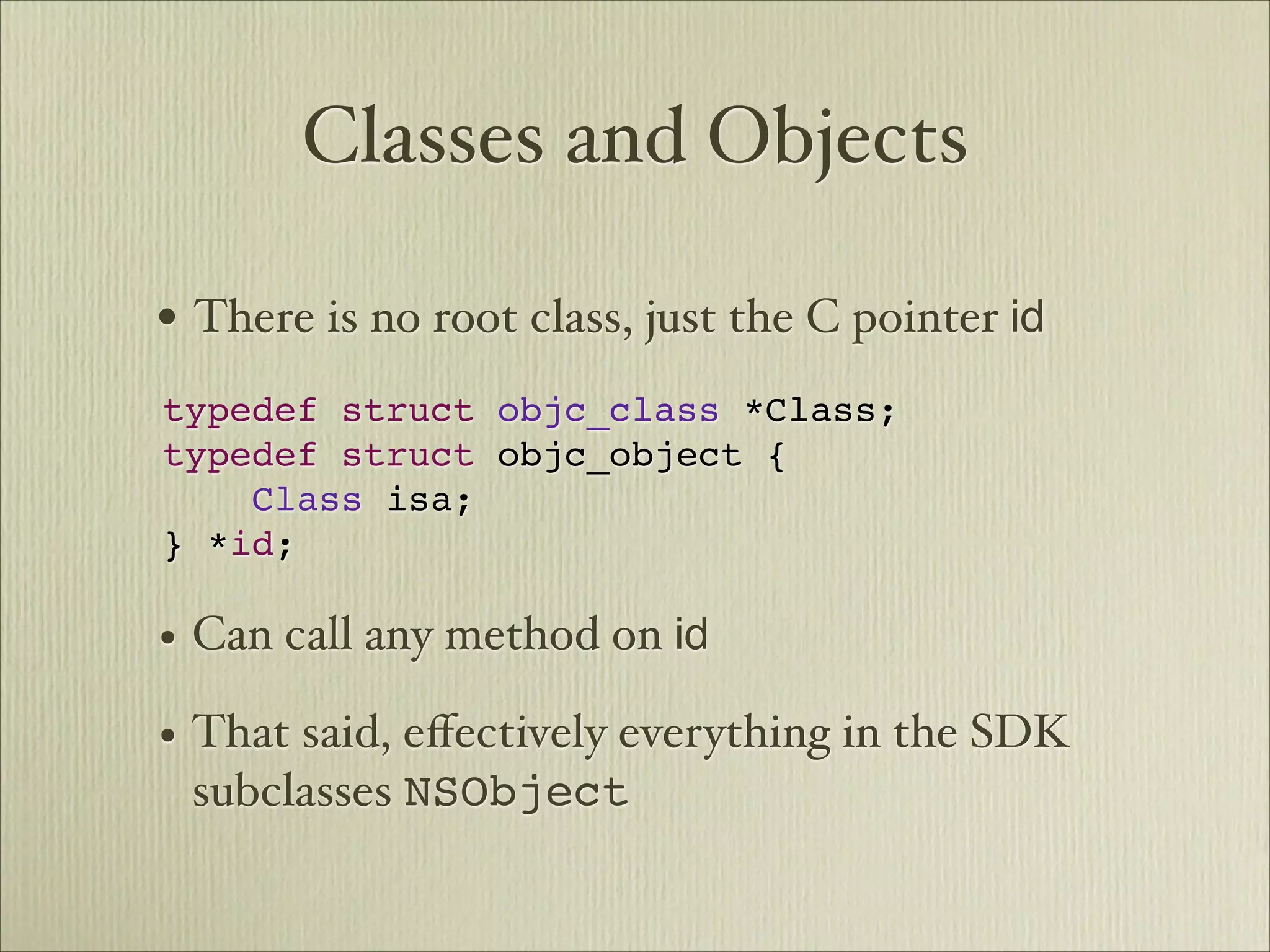
![Methods / messages
• Call a method on an object with []
•[foo bar];
•[foo bar: 1 withBaz: 2];
• Method calls are really message dispatches
• OK for foo to be nil. Not OK if foo’s class
doesn’t understand bar or bar:withBaz:
• 🙅 Don’t check variables for nil.](https://image.slidesharecdn.com/obj-c-not-java-130110082546-phpapp01/75/Objective-C-Is-Not-Java-7-2048.jpg)
![New objects
• alloc allocates memory for a new object, init
sets up its state. Always do both.
NSMutableArray *mutableSessions =
[[NSMutableArray alloc] init];
• [Class new] is equivalent to [[Class
alloc] init]. 🙅 Nobody uses it.
• Some classes have convenience initializers:
[NSURL URLWithString:] instead of
[[NSURL alloc] initWithString:]](https://image.slidesharecdn.com/obj-c-not-java-130110082546-phpapp01/75/Objective-C-Is-Not-Java-8-2048.jpg)
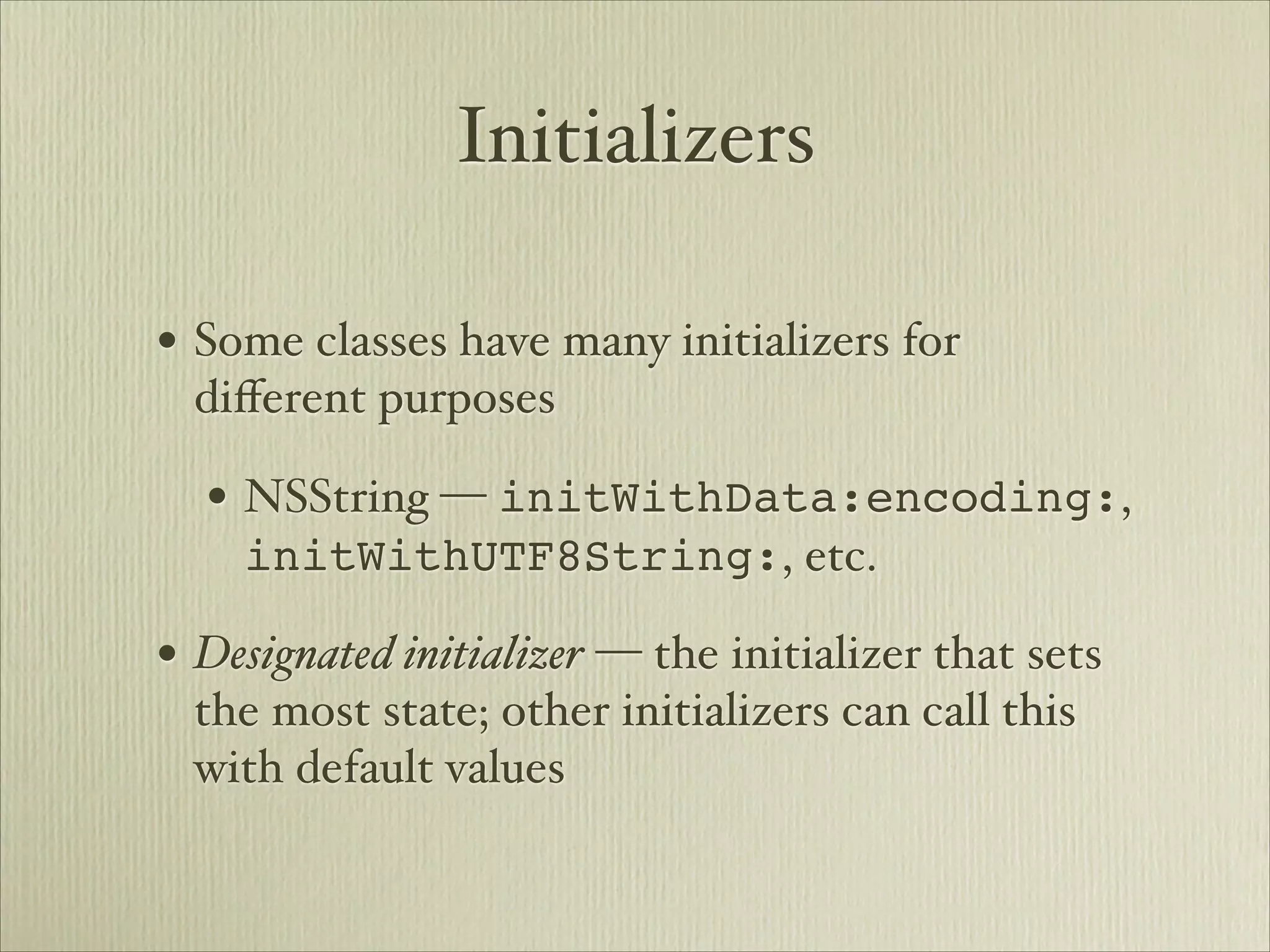
![End-of-life
• dealloc is called when an object is being
destroyed. Override for needed cleanup, end
with [super dealloc]
• 🙆 Can actually count on this, unlike Java’s
finalize()
• Not as big a deal as it used to be (see ARC,
later)](https://image.slidesharecdn.com/obj-c-not-java-130110082546-phpapp01/75/Objective-C-Is-Not-Java-10-2048.jpg)
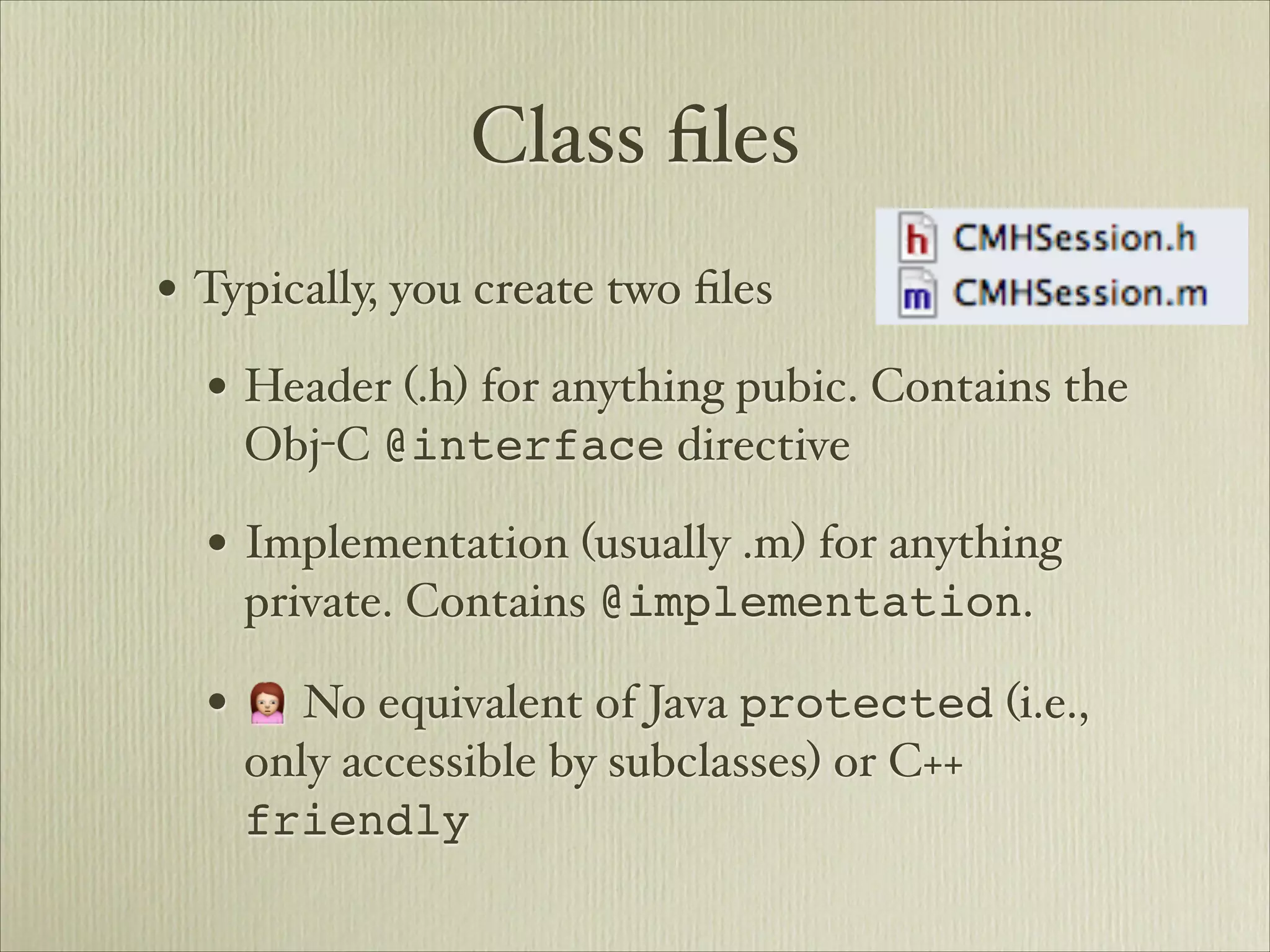
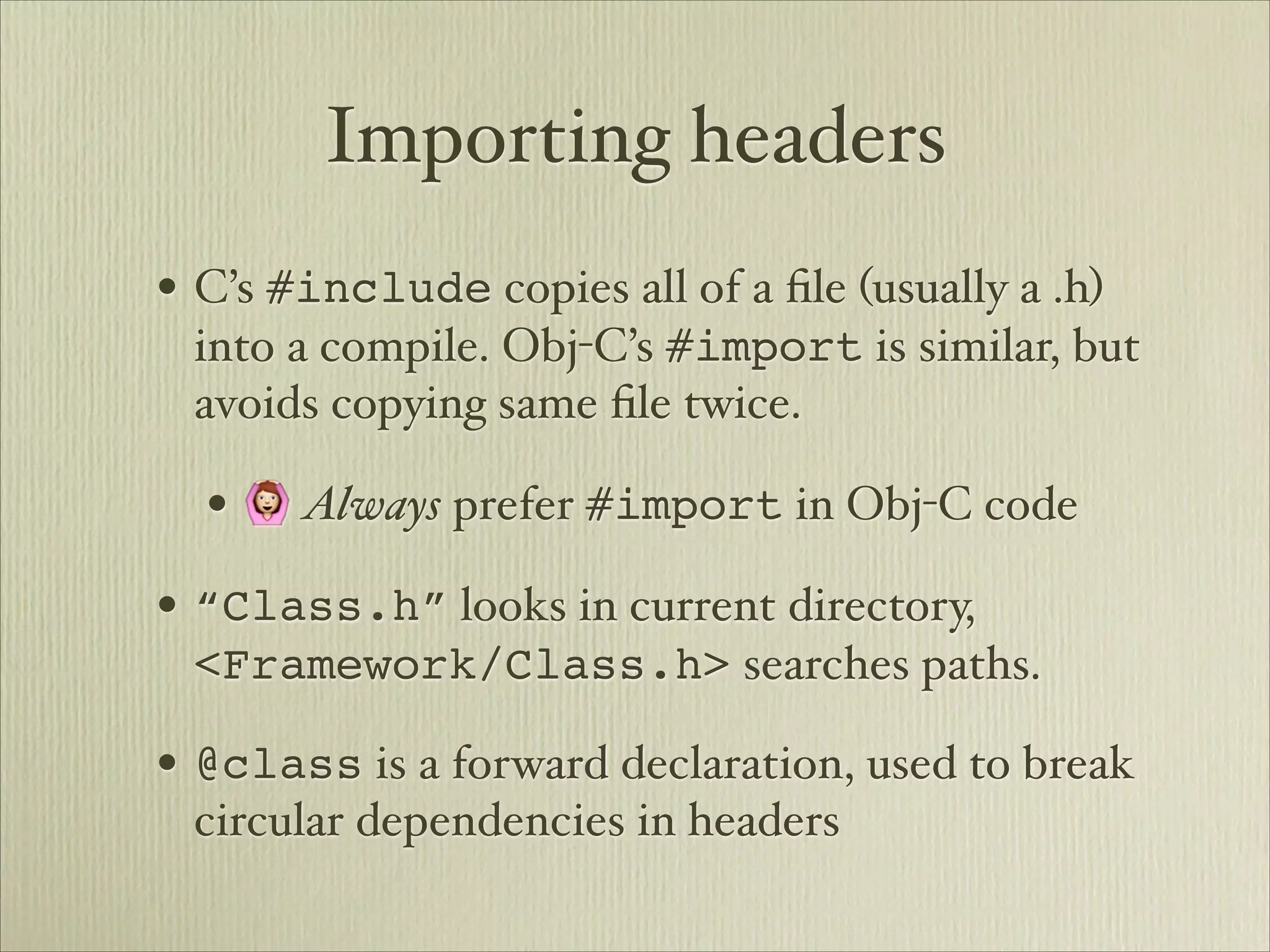
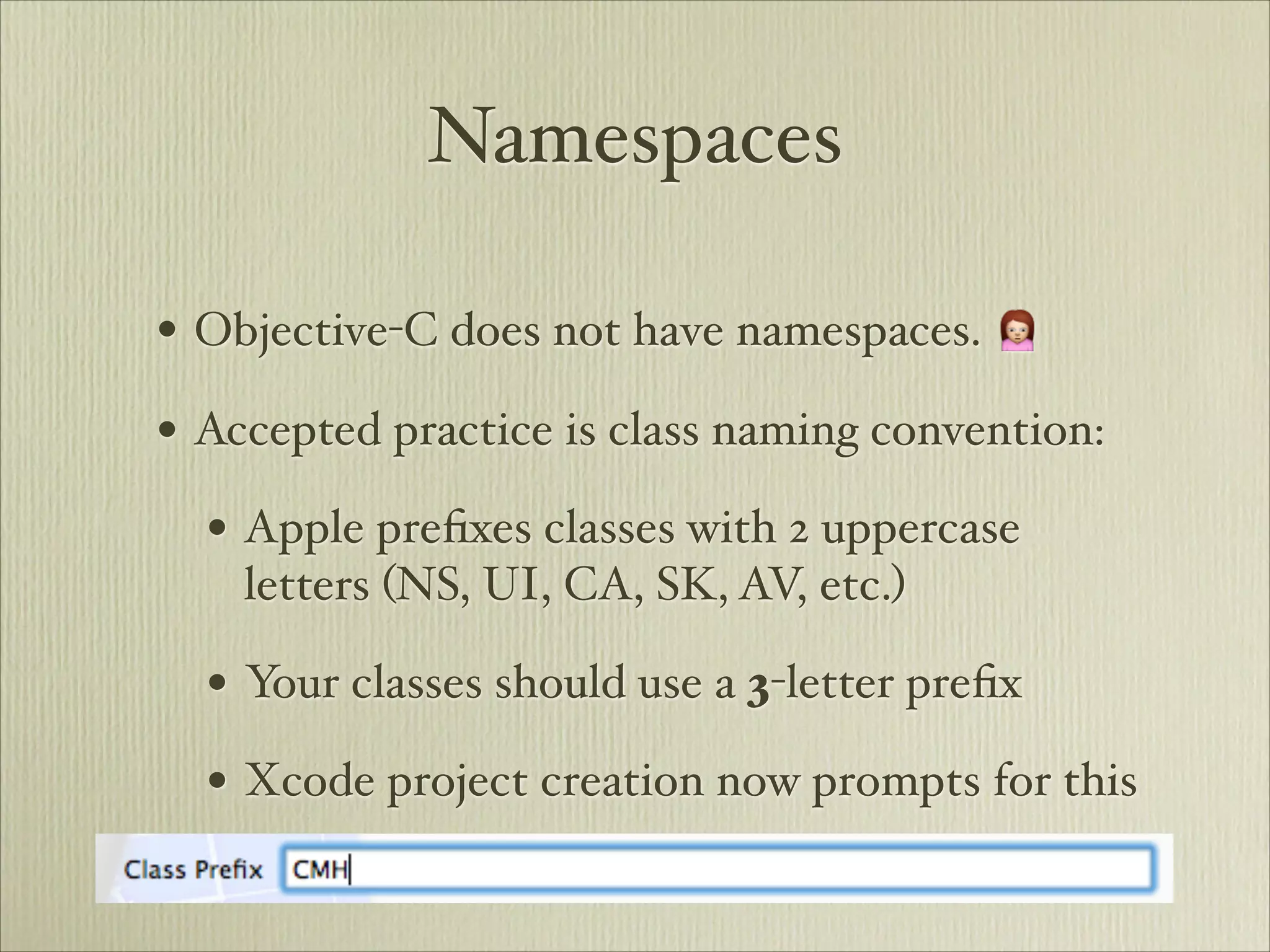
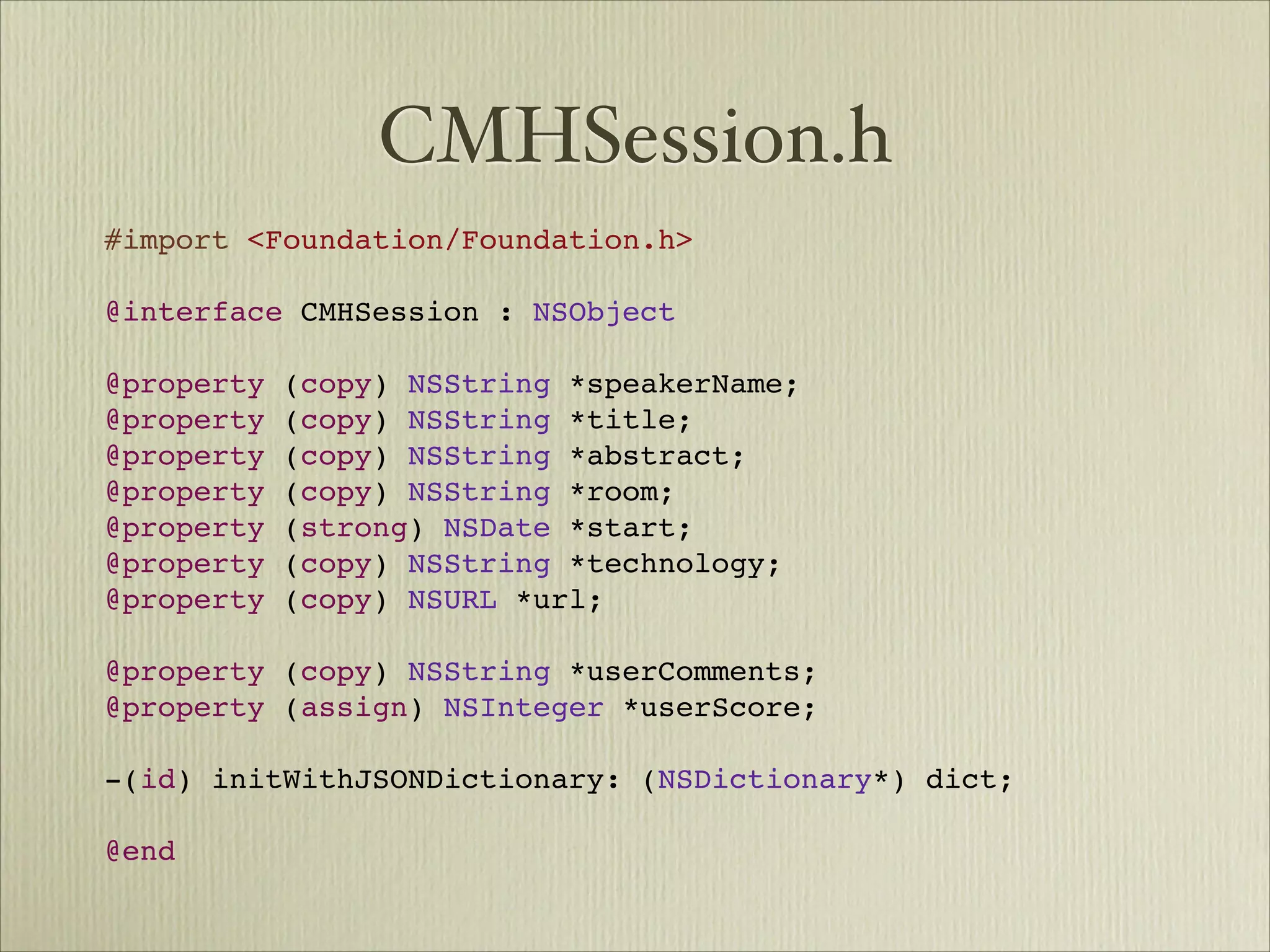
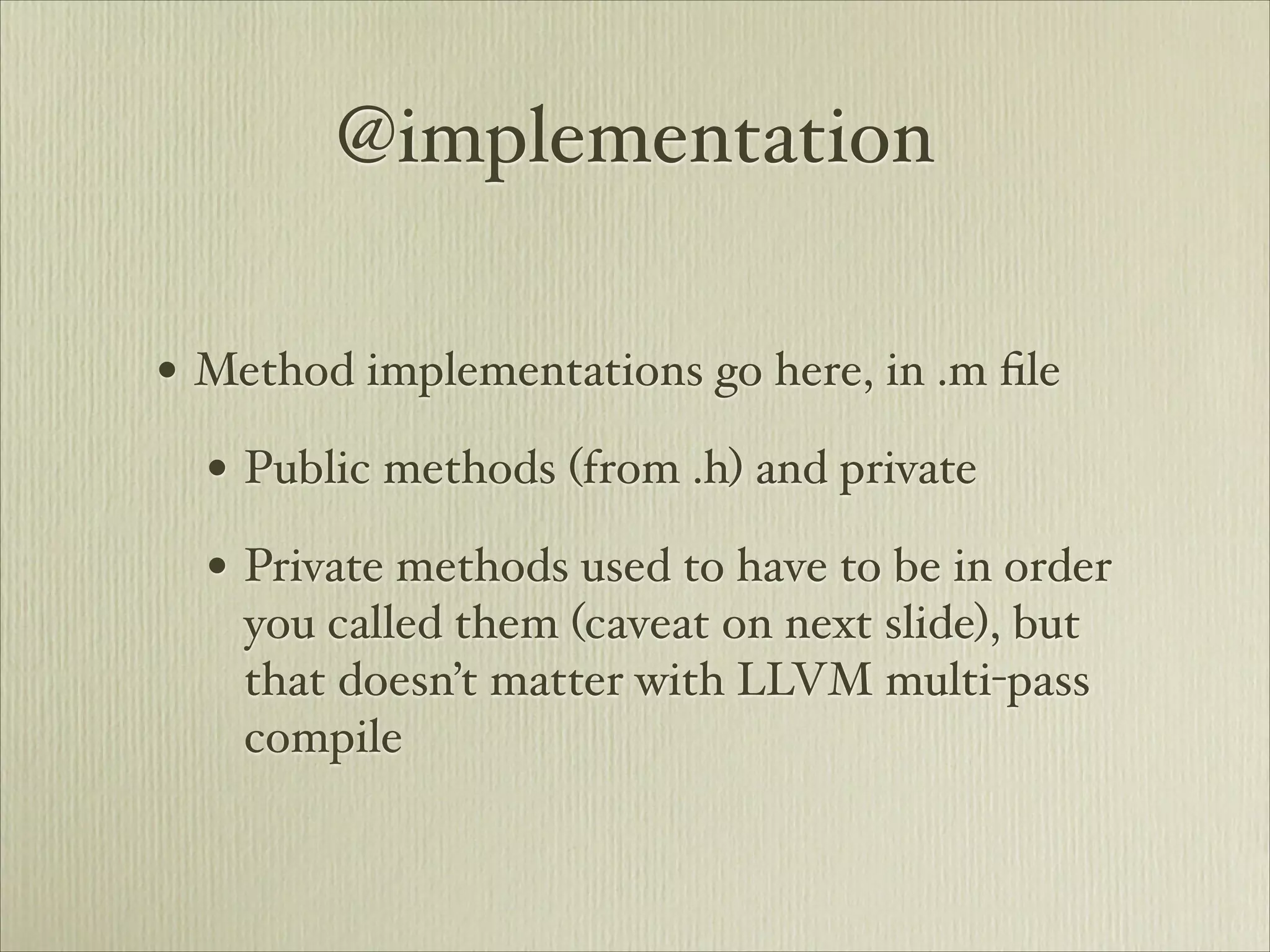
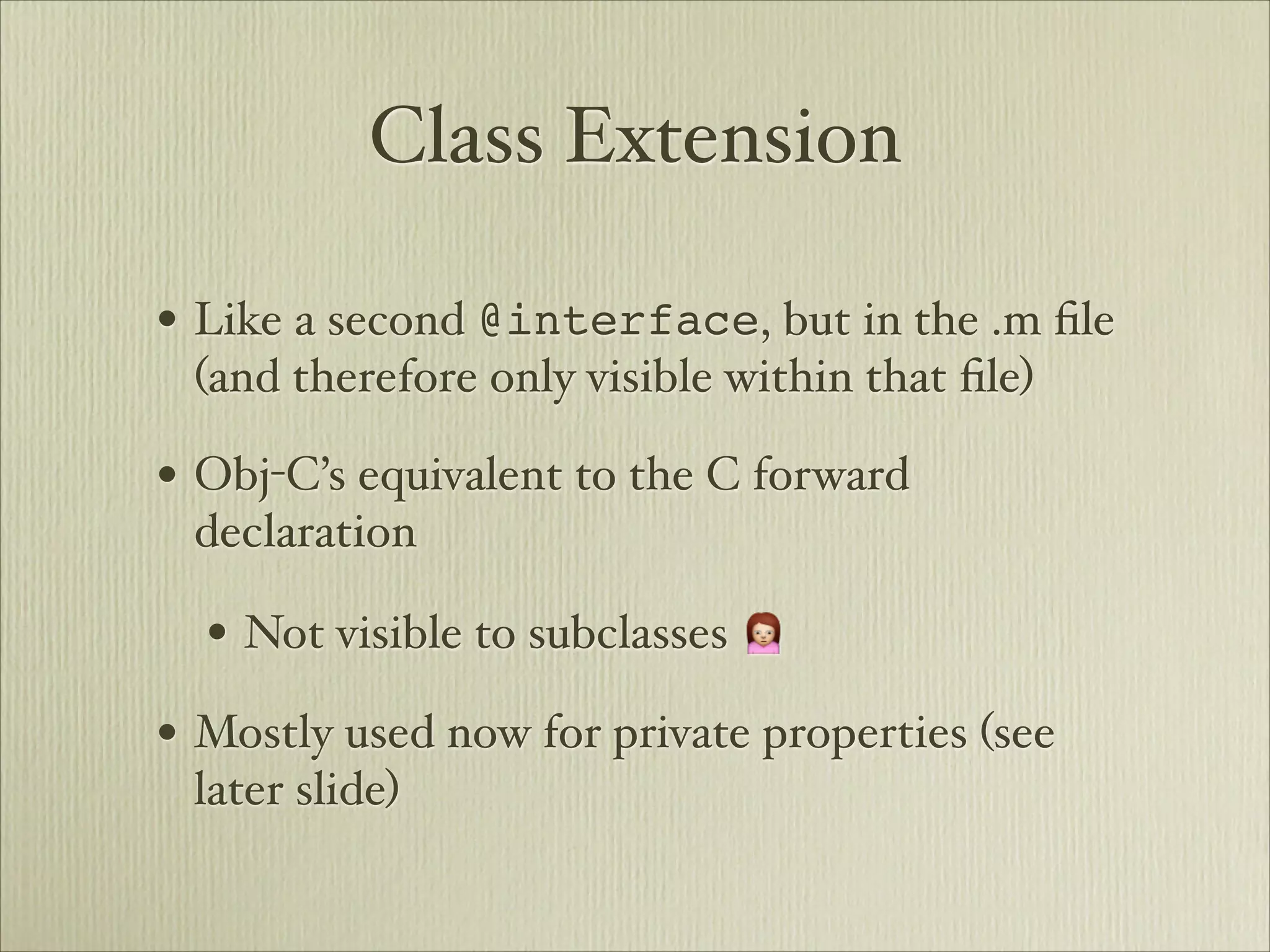
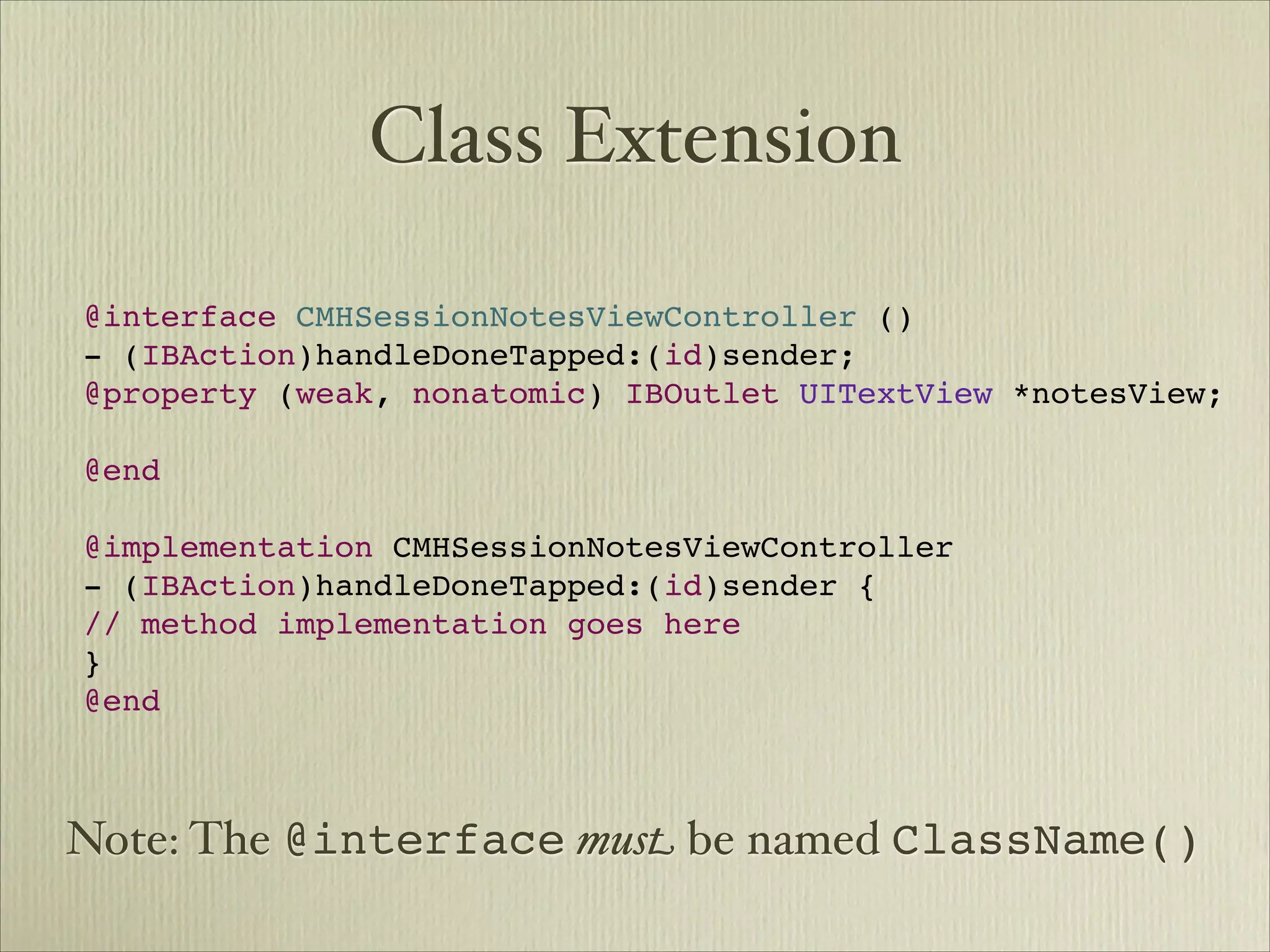
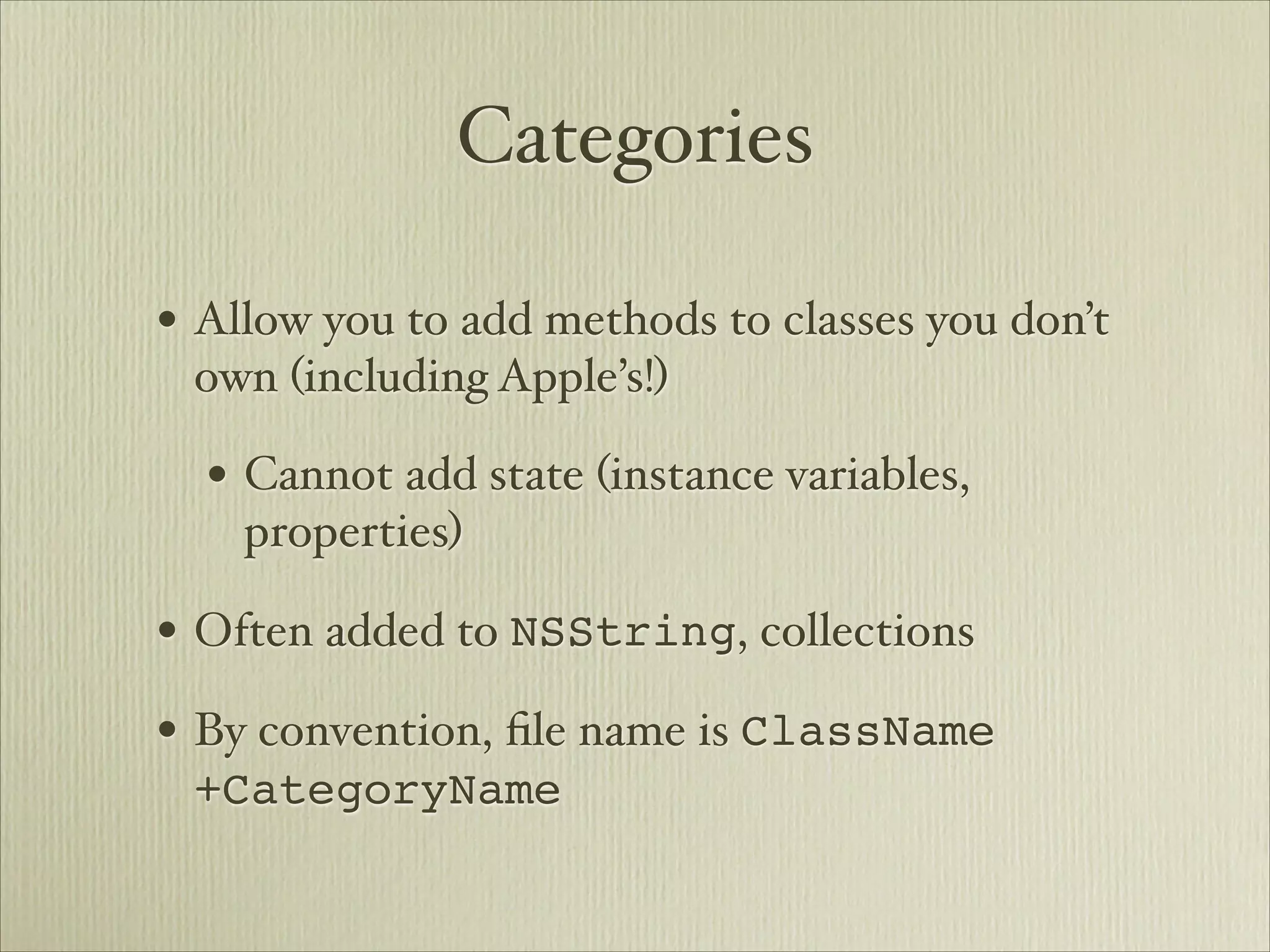
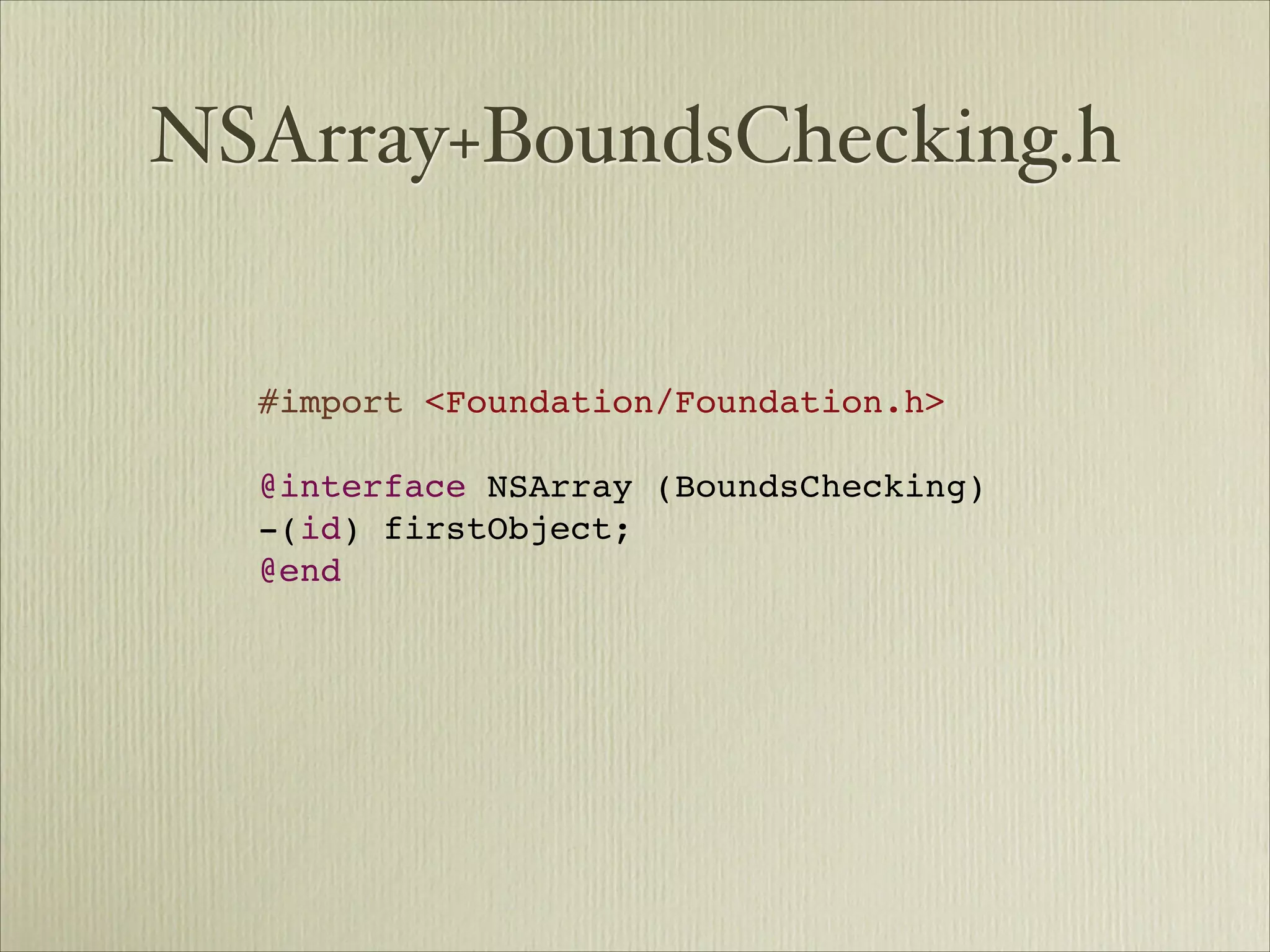
![NSArray+BoundsChecking.m
#import "NSArray+BoundsChecking.h"
@implementation NSArray (BoundsChecking)
-(id) firstObject {
if ([self count] == 0) {
return nil;
}
return [self objectAtIndex:0];
}
@end](https://image.slidesharecdn.com/obj-c-not-java-130110082546-phpapp01/75/Objective-C-Is-Not-Java-20-2048.jpg)
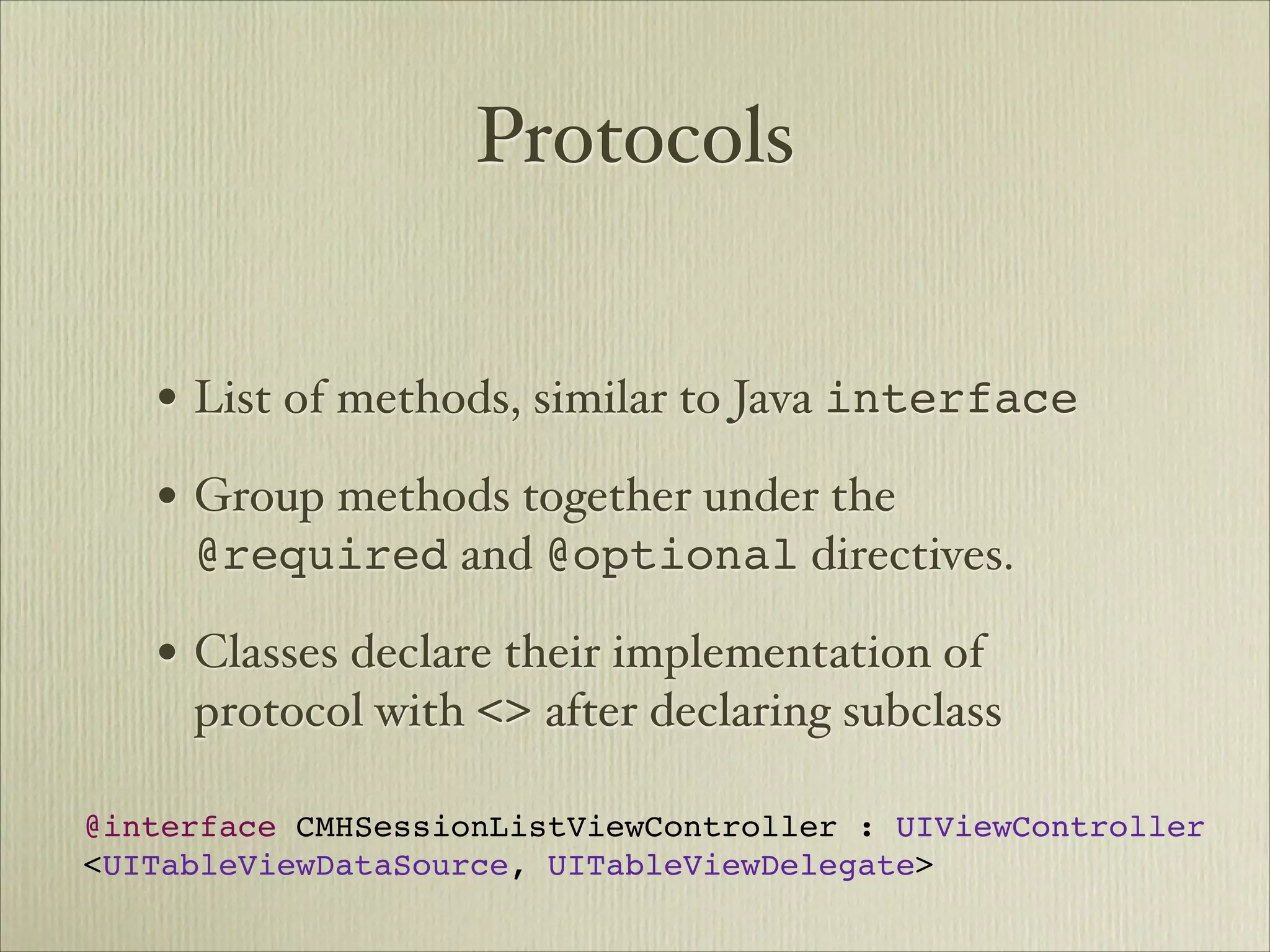
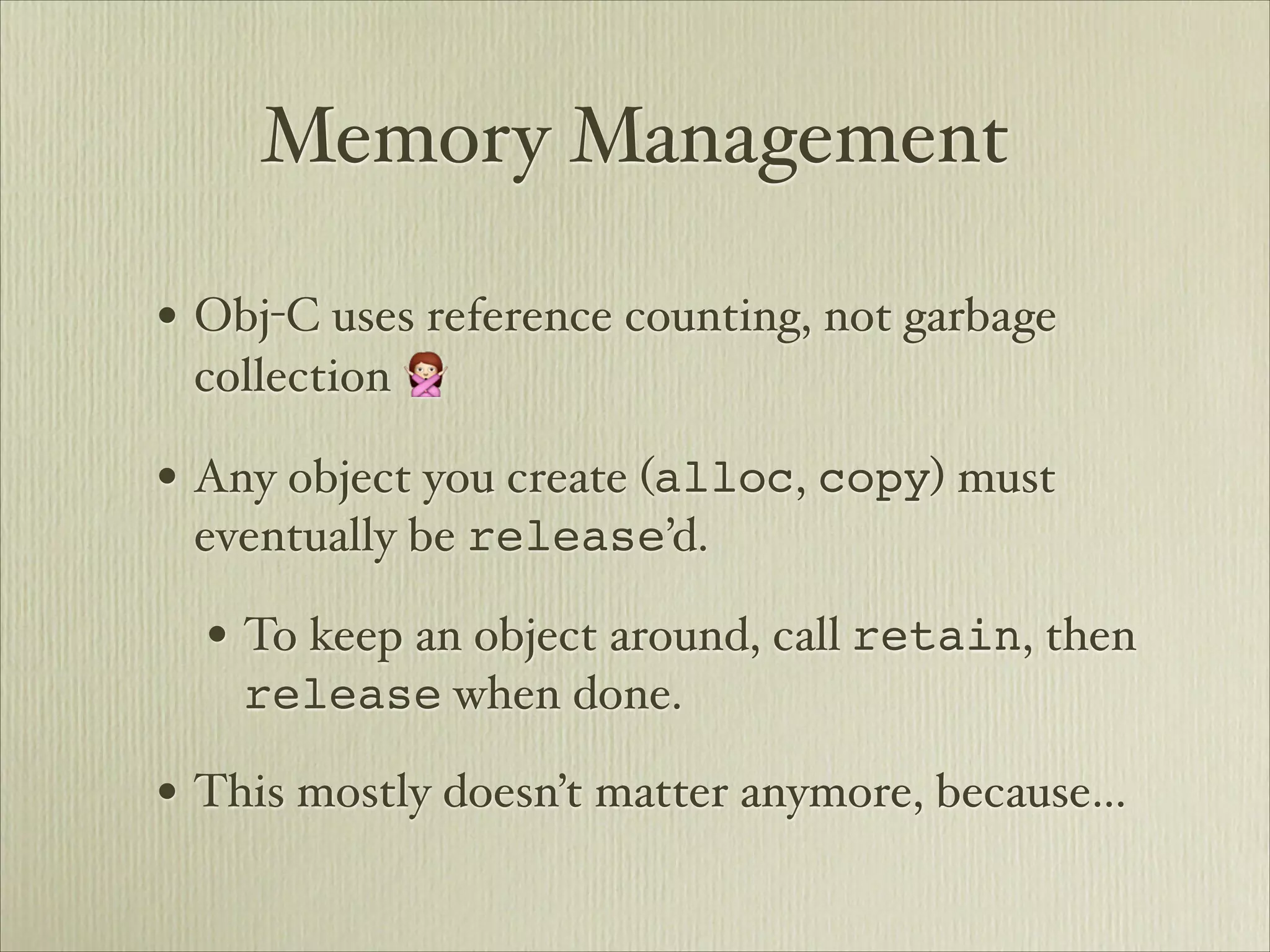
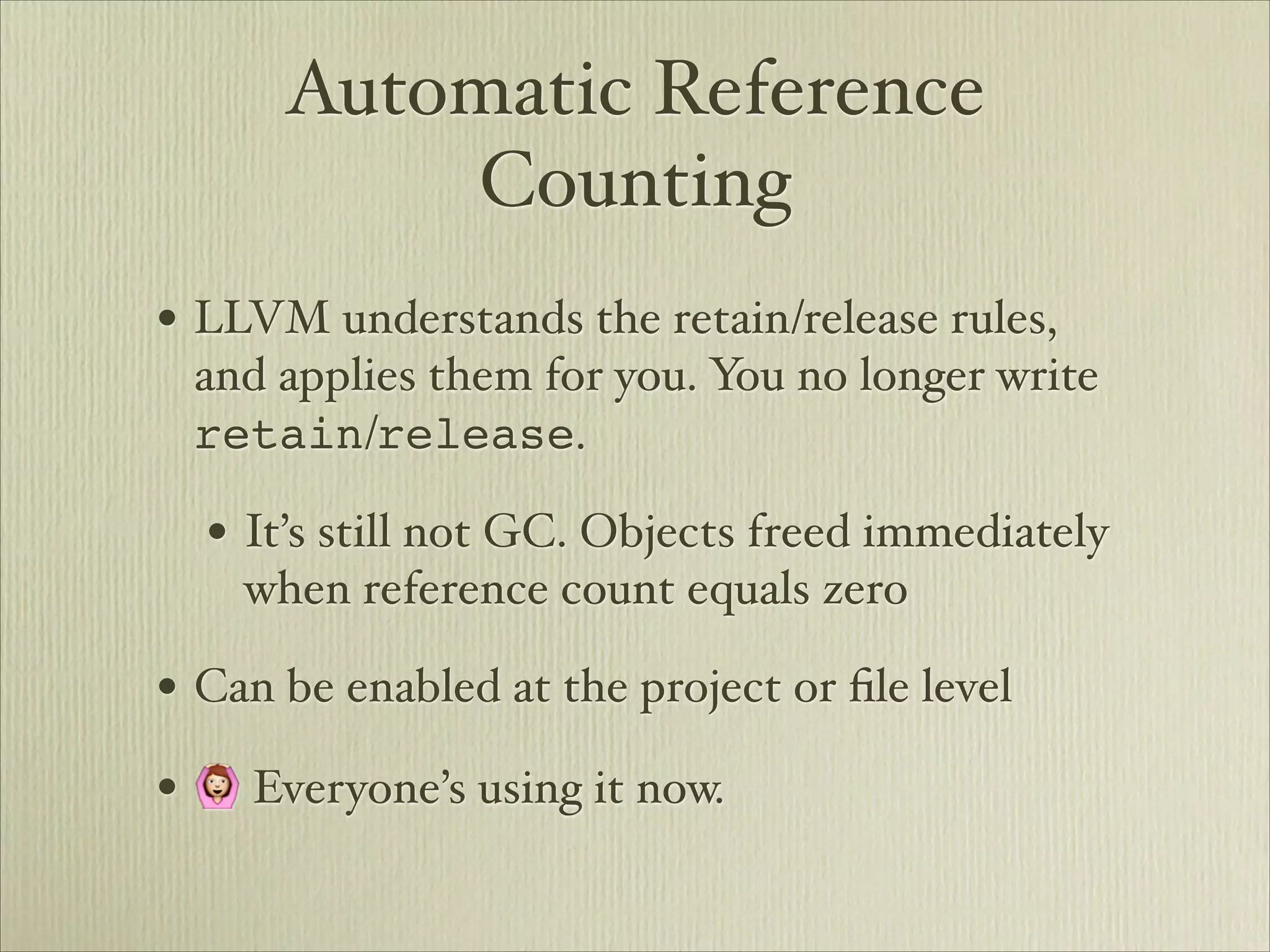
![Properties
• An instance variable combined with getter/
setter methods, all built for you by the
compiler.
• Declaration also specifies threading, memory
management, and writability
• Accessed via the dot operator, not brackets
self.speakerName = [dict valueForKey:@"SpeakerName"];
cell.speakerLabel.text = session.speakerName;](https://image.slidesharecdn.com/obj-c-not-java-130110082546-phpapp01/75/Objective-C-Is-Not-Java-24-2048.jpg)
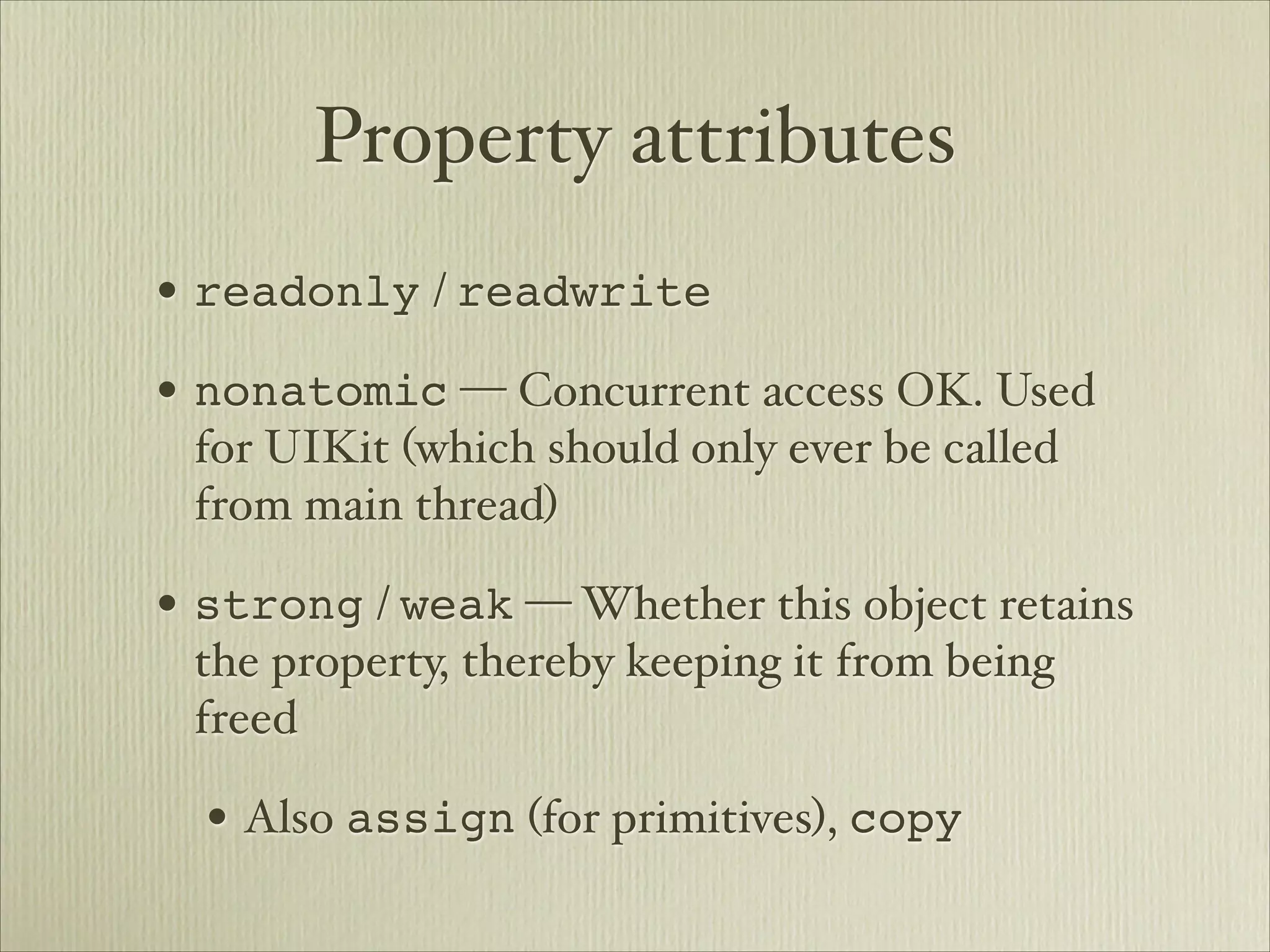
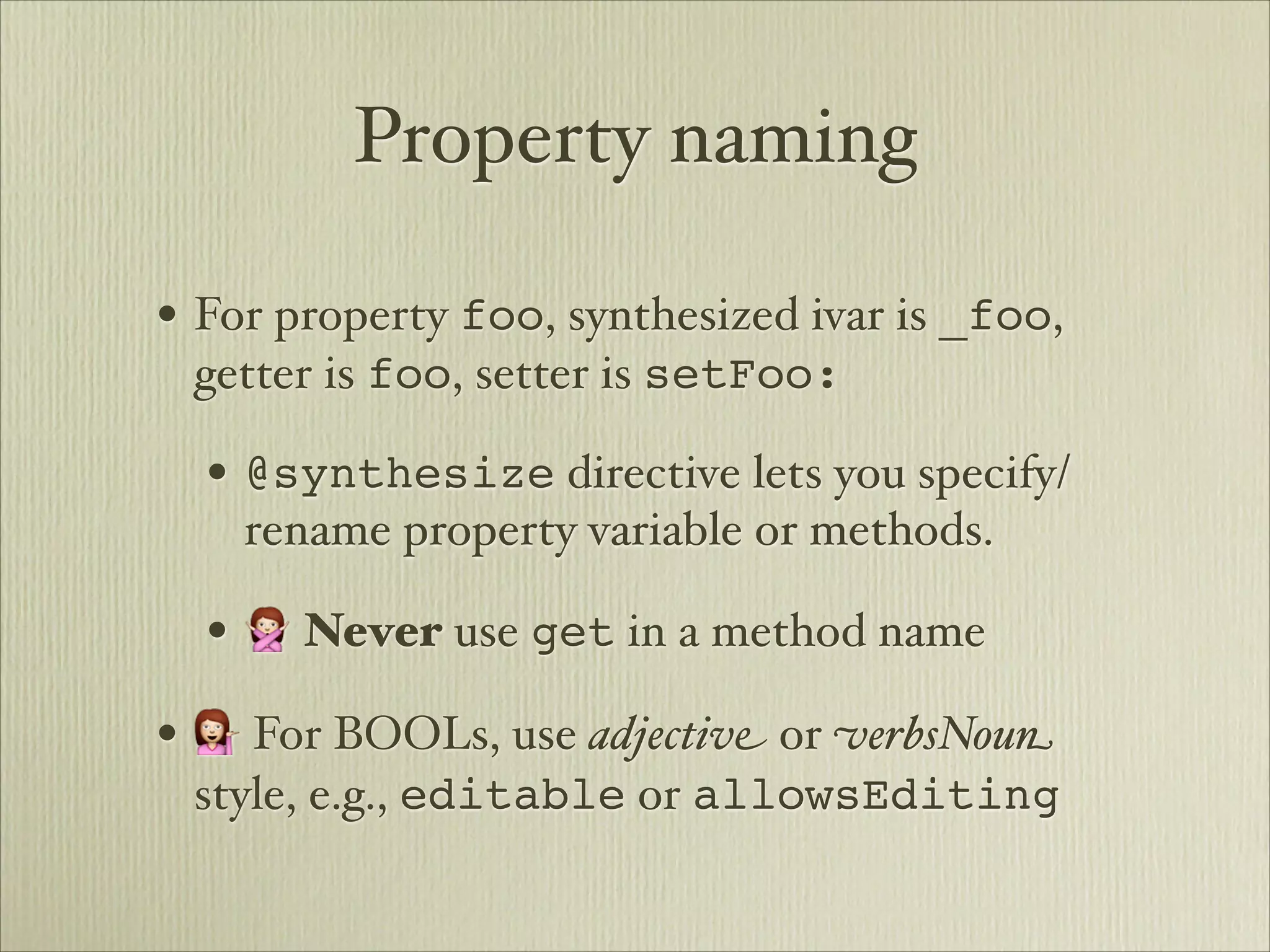
![Other Naming Conventions
• Method names should imply their argument
• What does [sort: YES] mean?
• How about [sort: @”name”] ?
• Aren’t these better as [sortAscending:
YES] , [sortByProperty:@”name”] ?
• Callbacks often start with who’s calling:
tableView:didSelectRowAtIndexPath:](https://image.slidesharecdn.com/obj-c-not-java-130110082546-phpapp01/75/Objective-C-Is-Not-Java-27-2048.jpg)
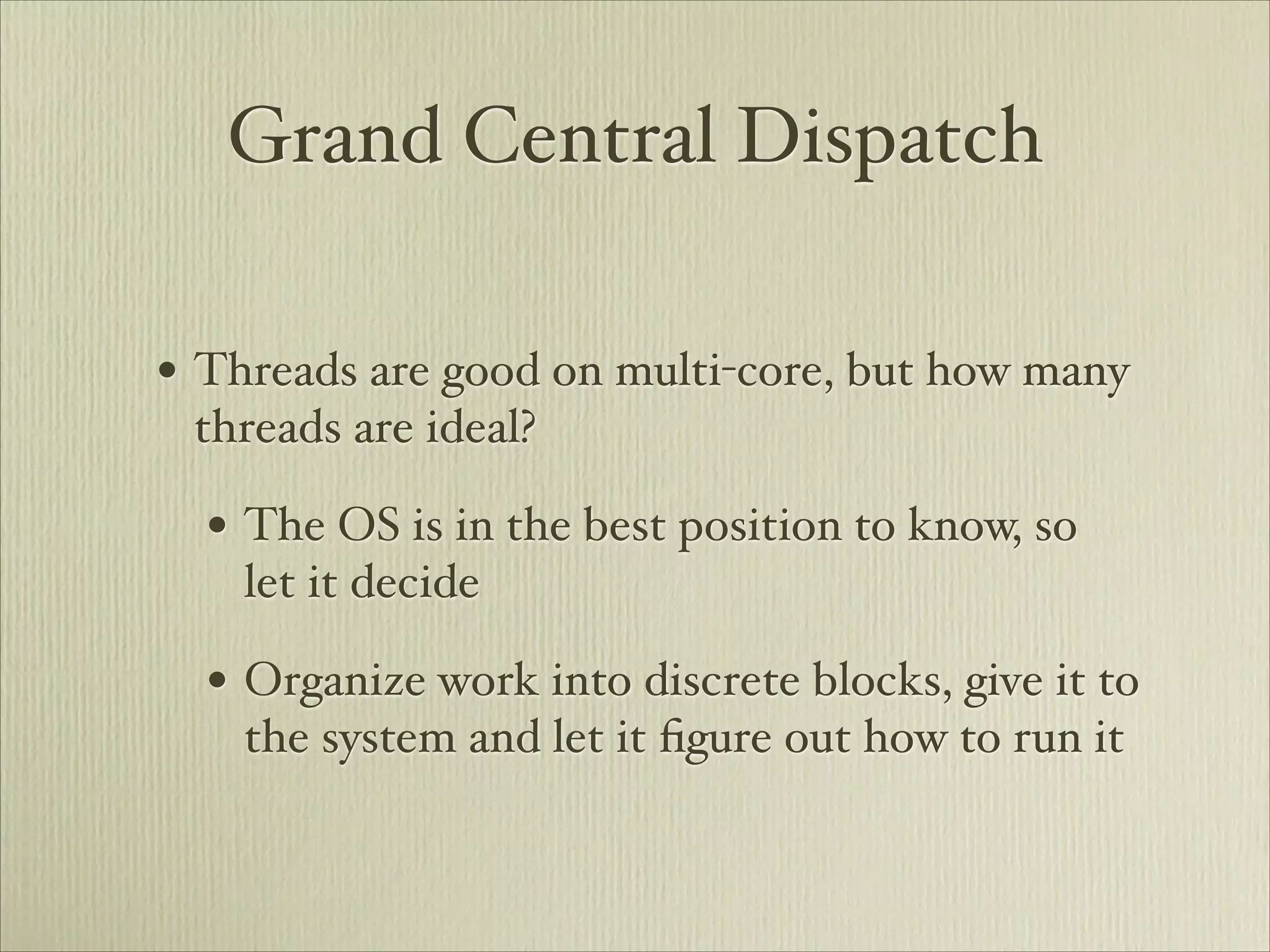
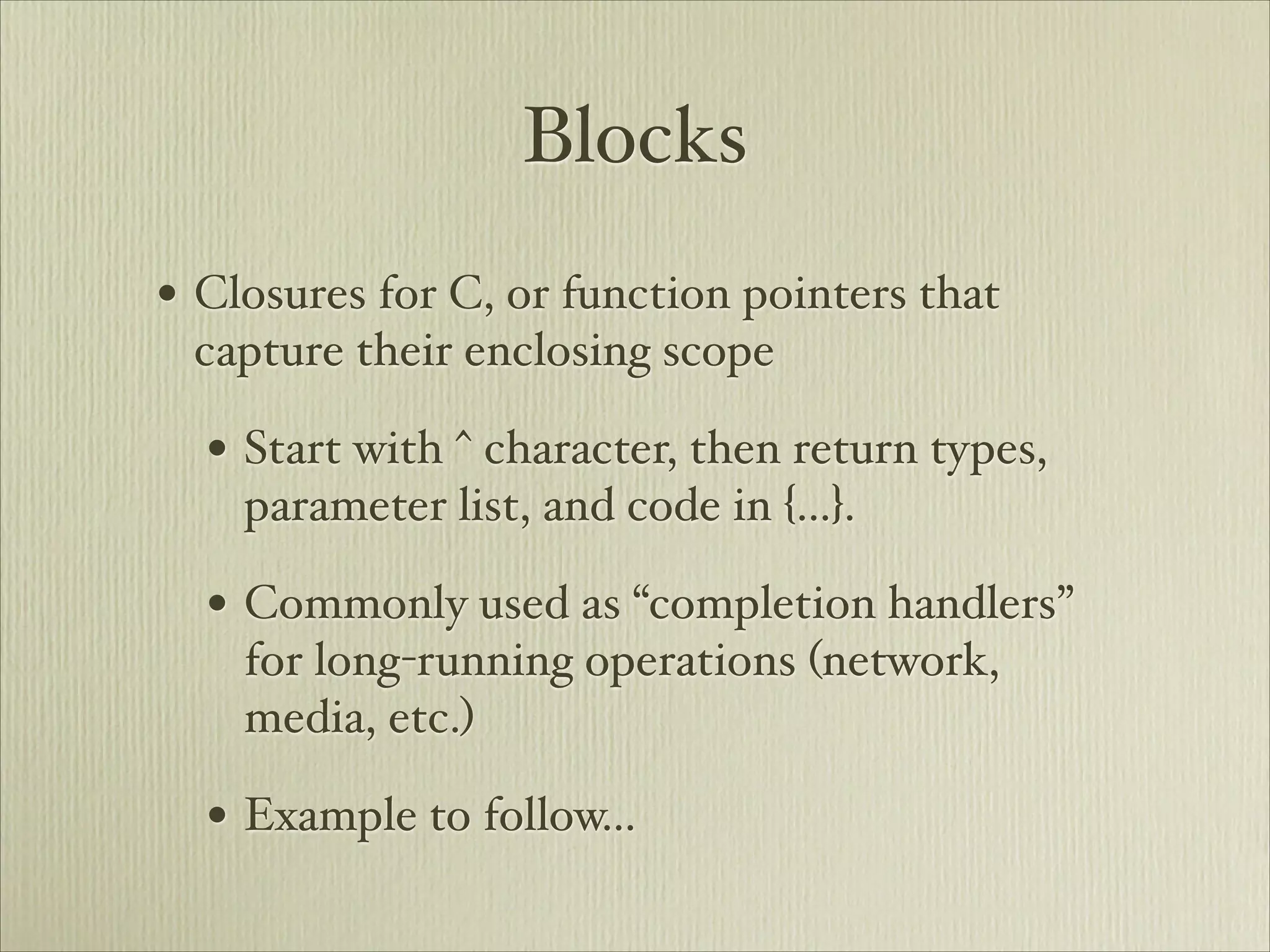
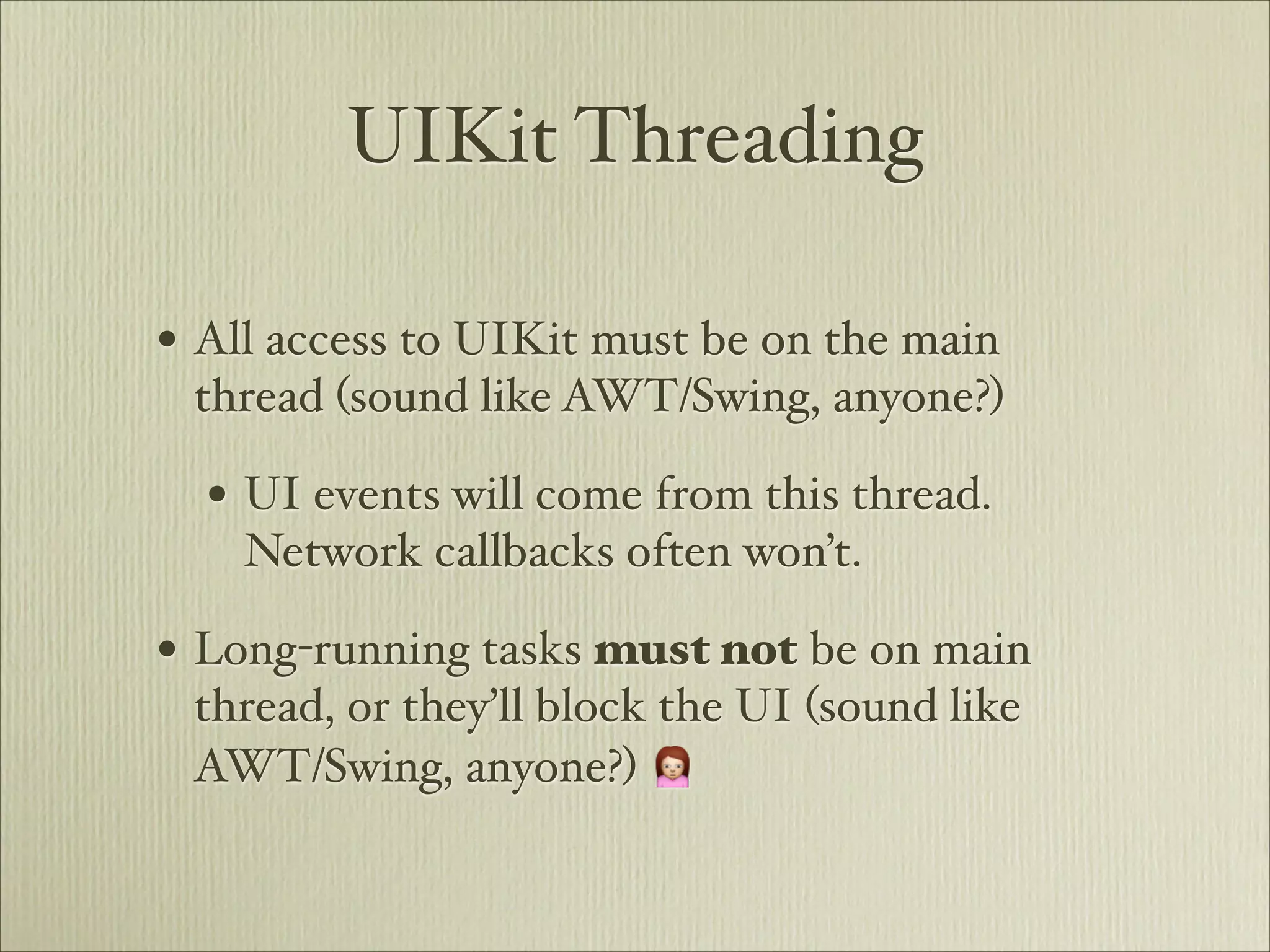
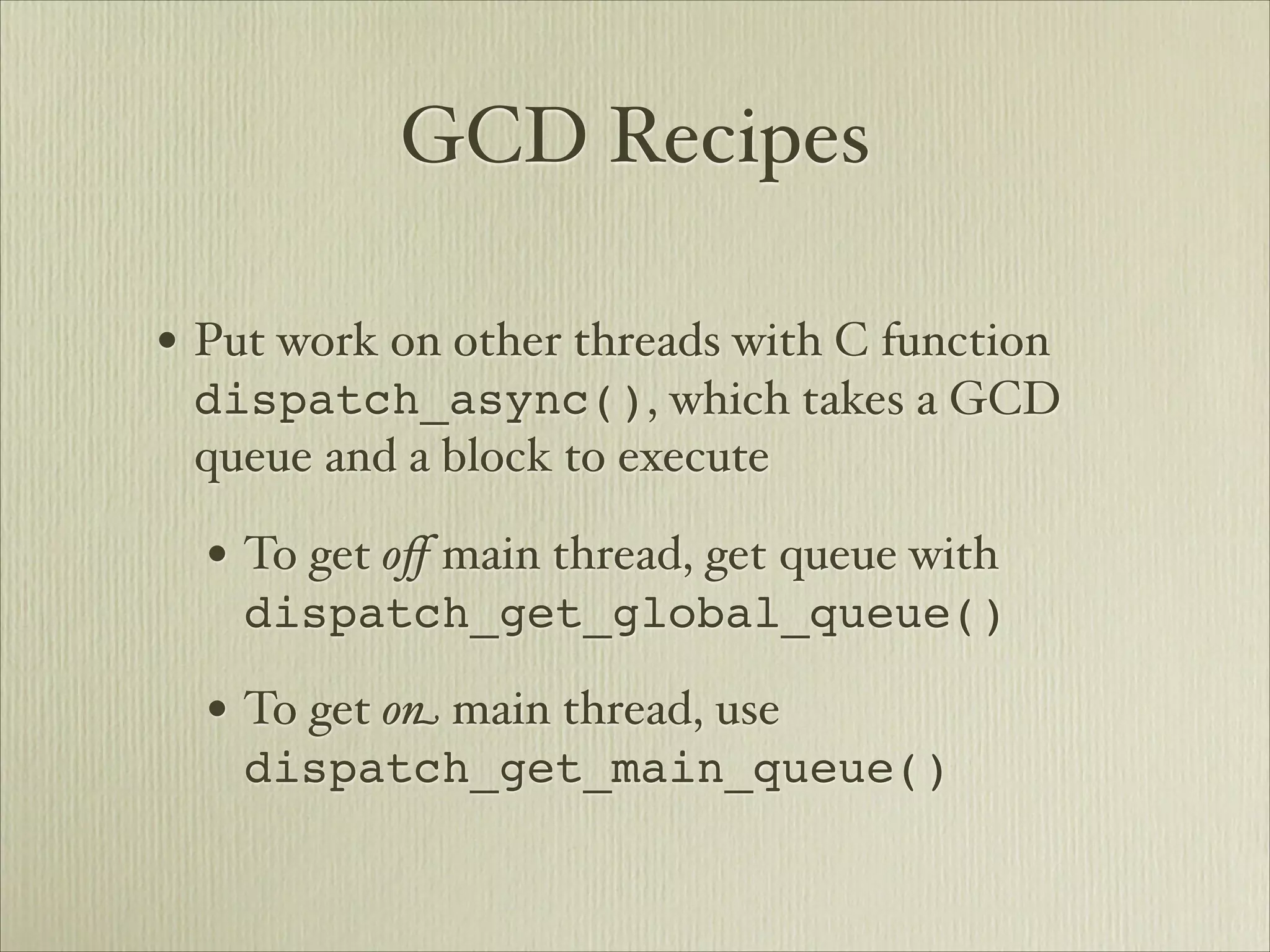
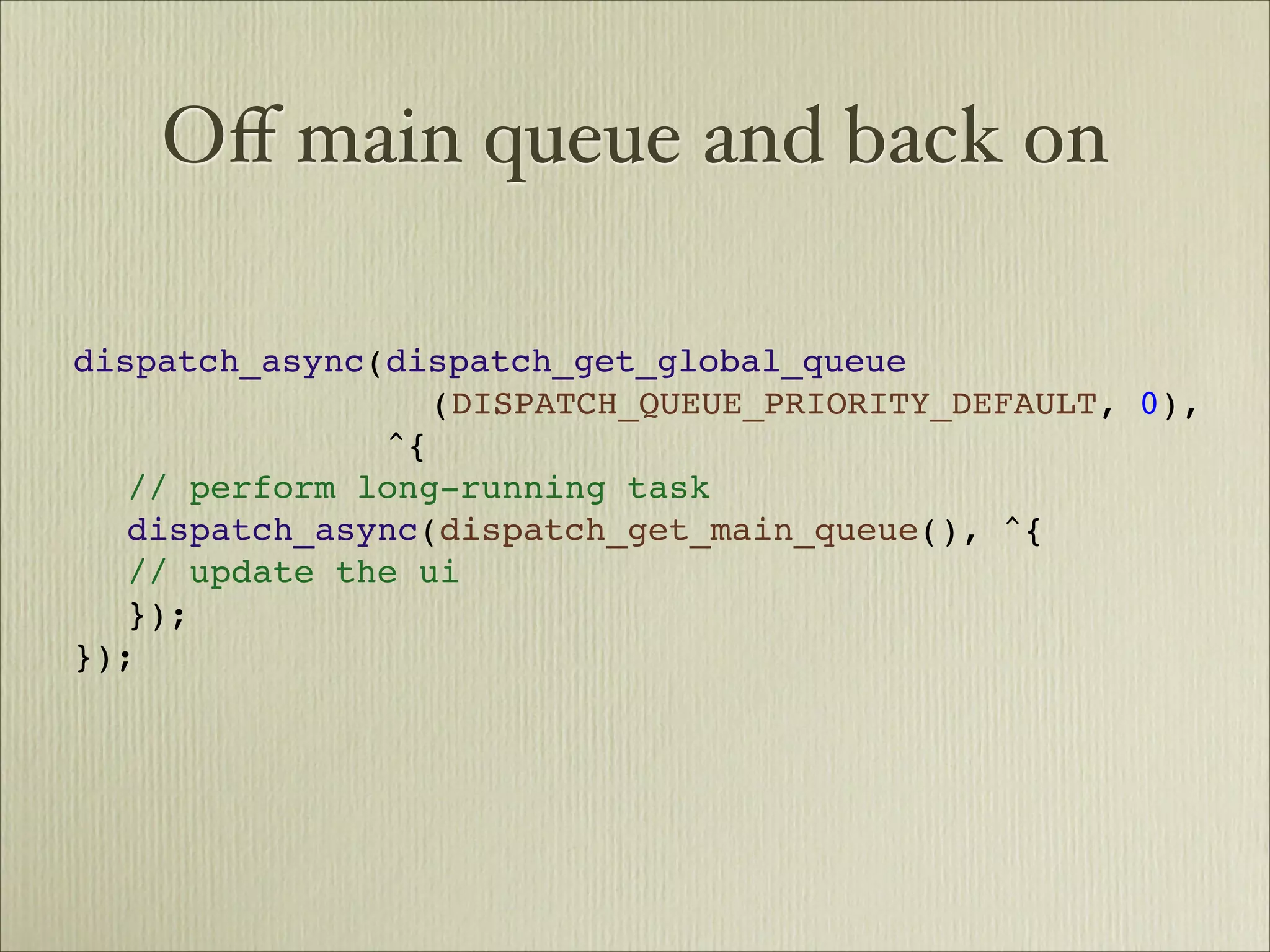

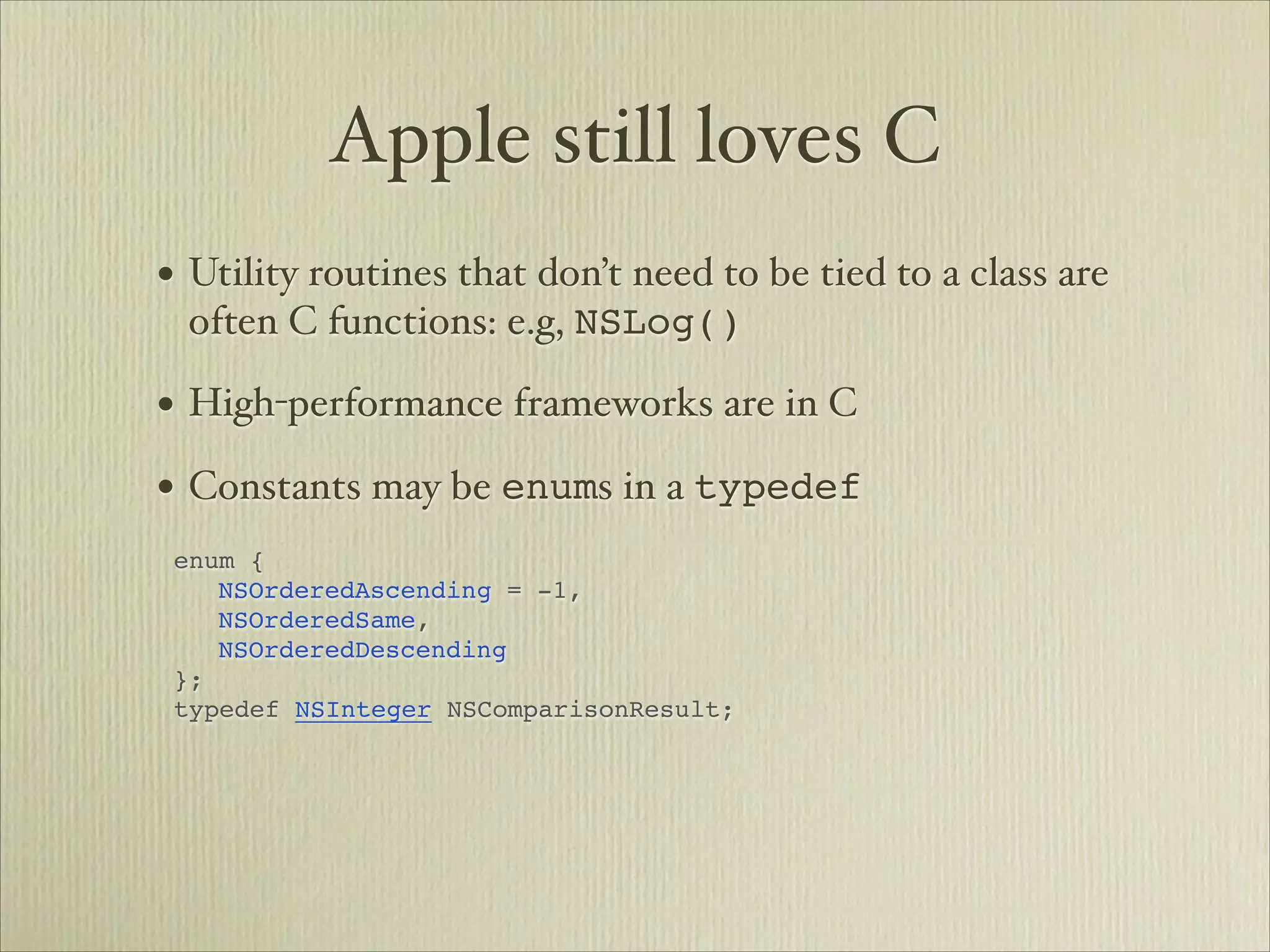
![All objects are pointers
• All Obj-C object declarations take *, because
they’re pointers
• Except for type id, which is already a pointer
• ** means “pointer to object”, used when
populating as a side effect
NSError *jsonErr = nil;
id jsonObject = [NSJSONSerialization JSONObjectWithData:jsonData
options:0
error:&jsonErr];](https://image.slidesharecdn.com/obj-c-not-java-130110082546-phpapp01/75/Objective-C-Is-Not-Java-35-2048.jpg)
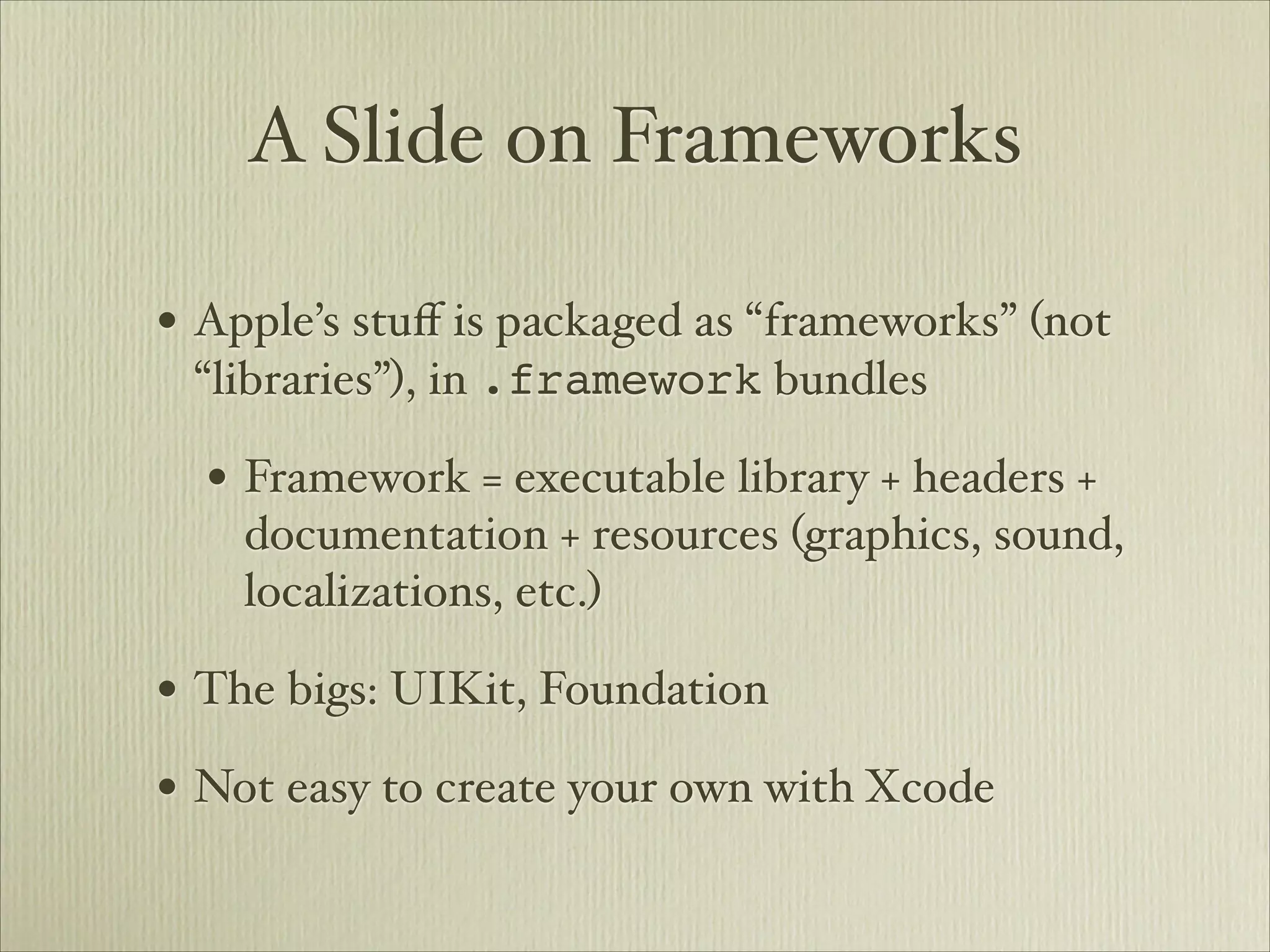
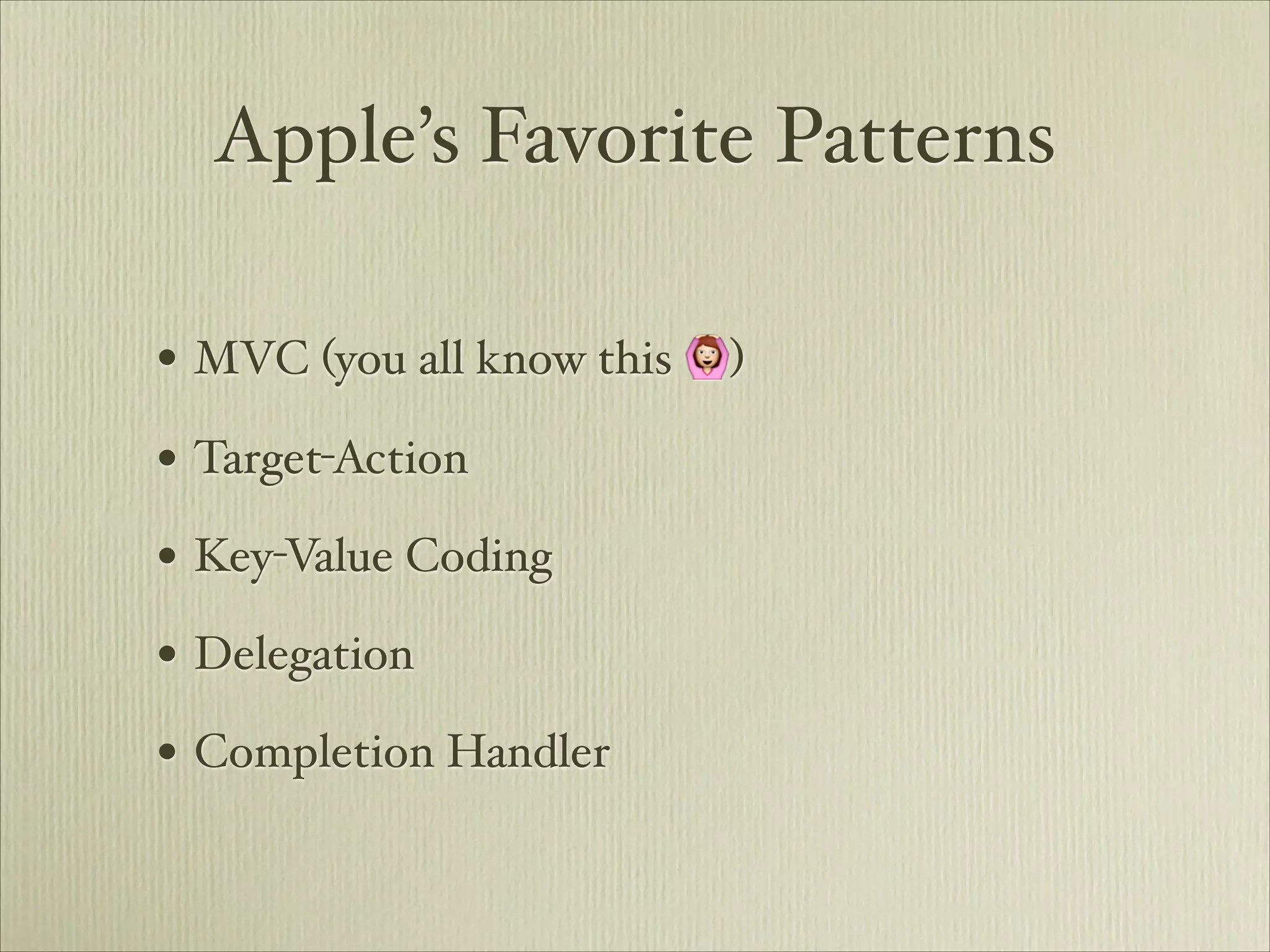
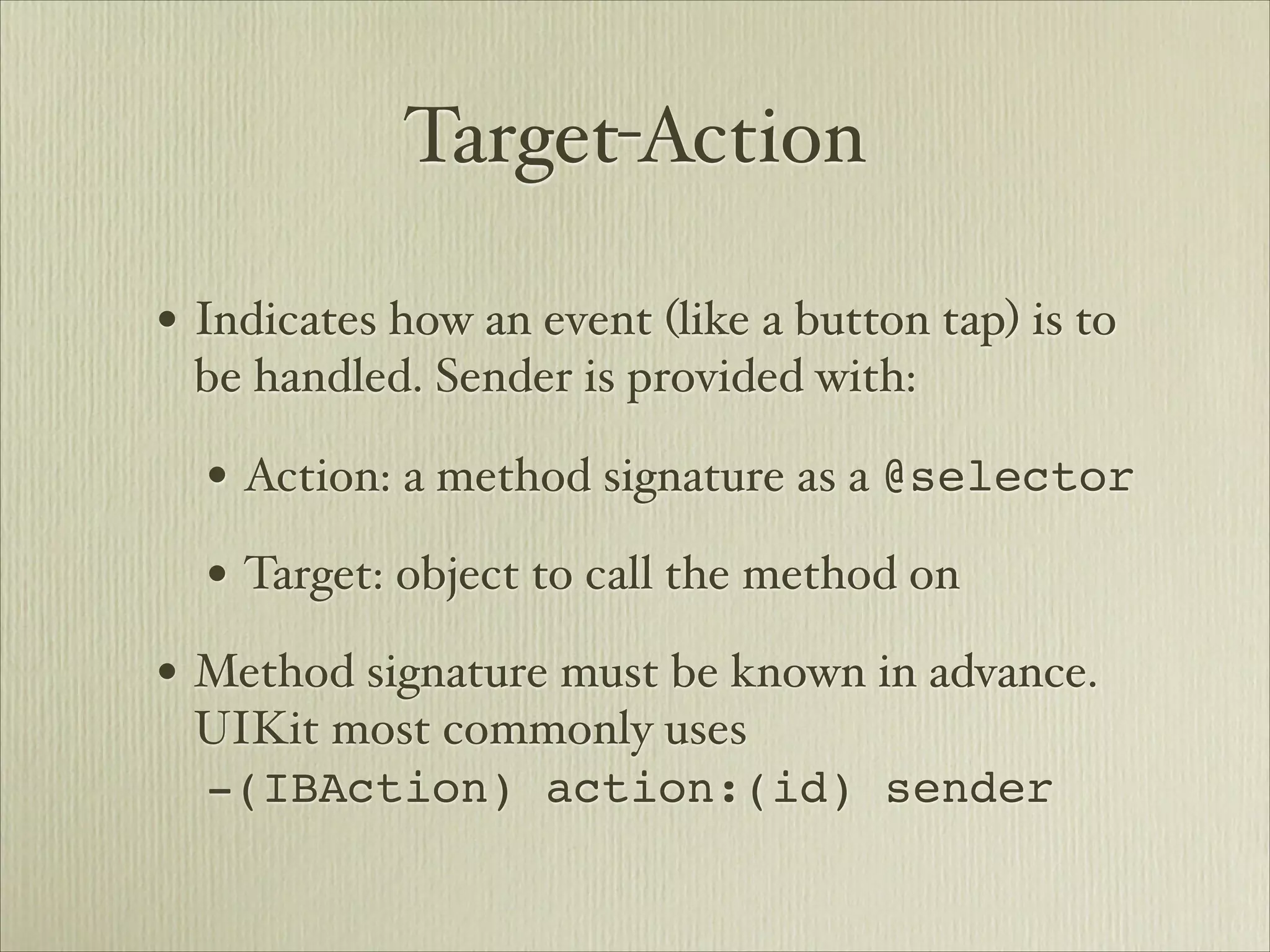
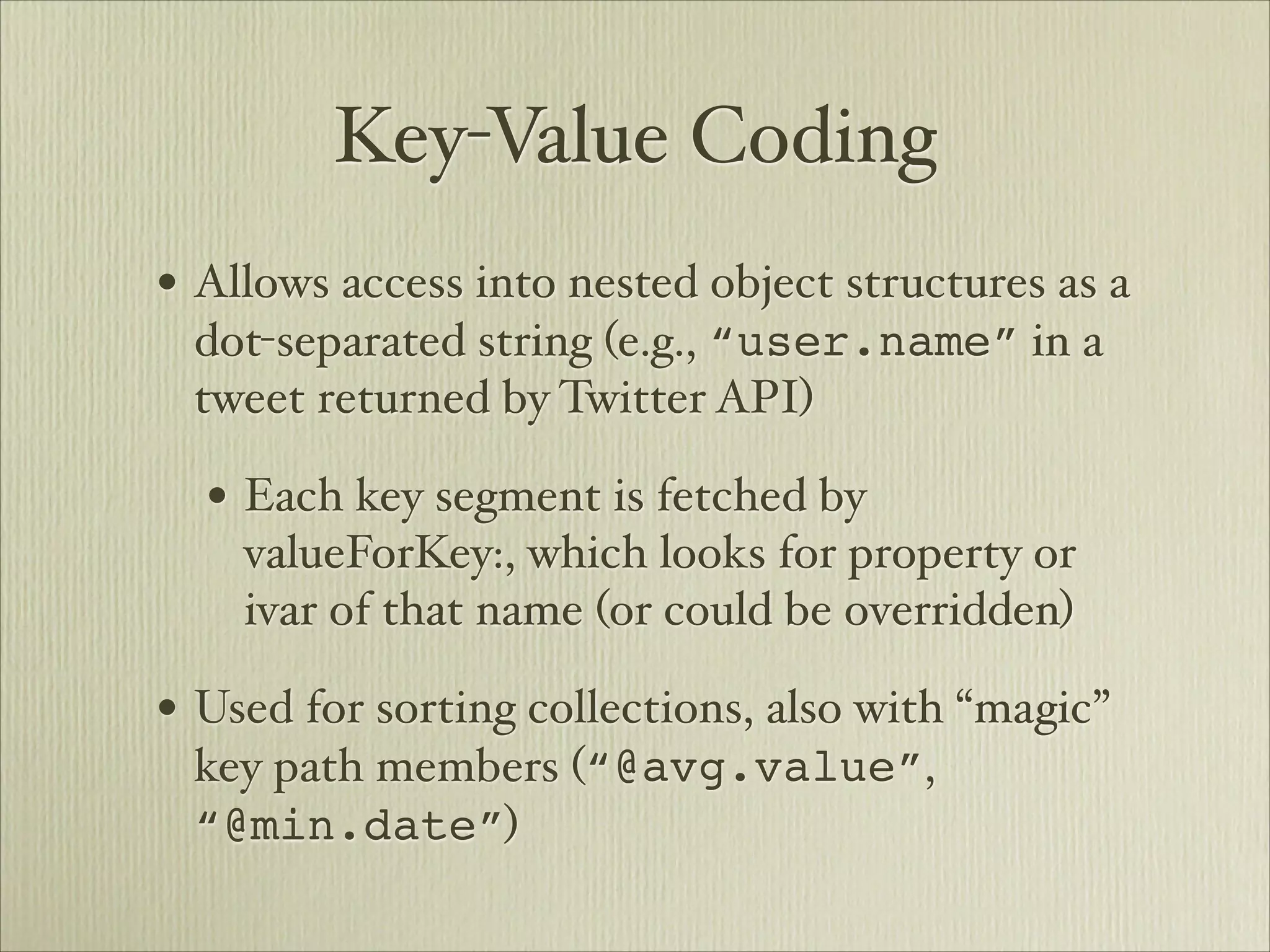
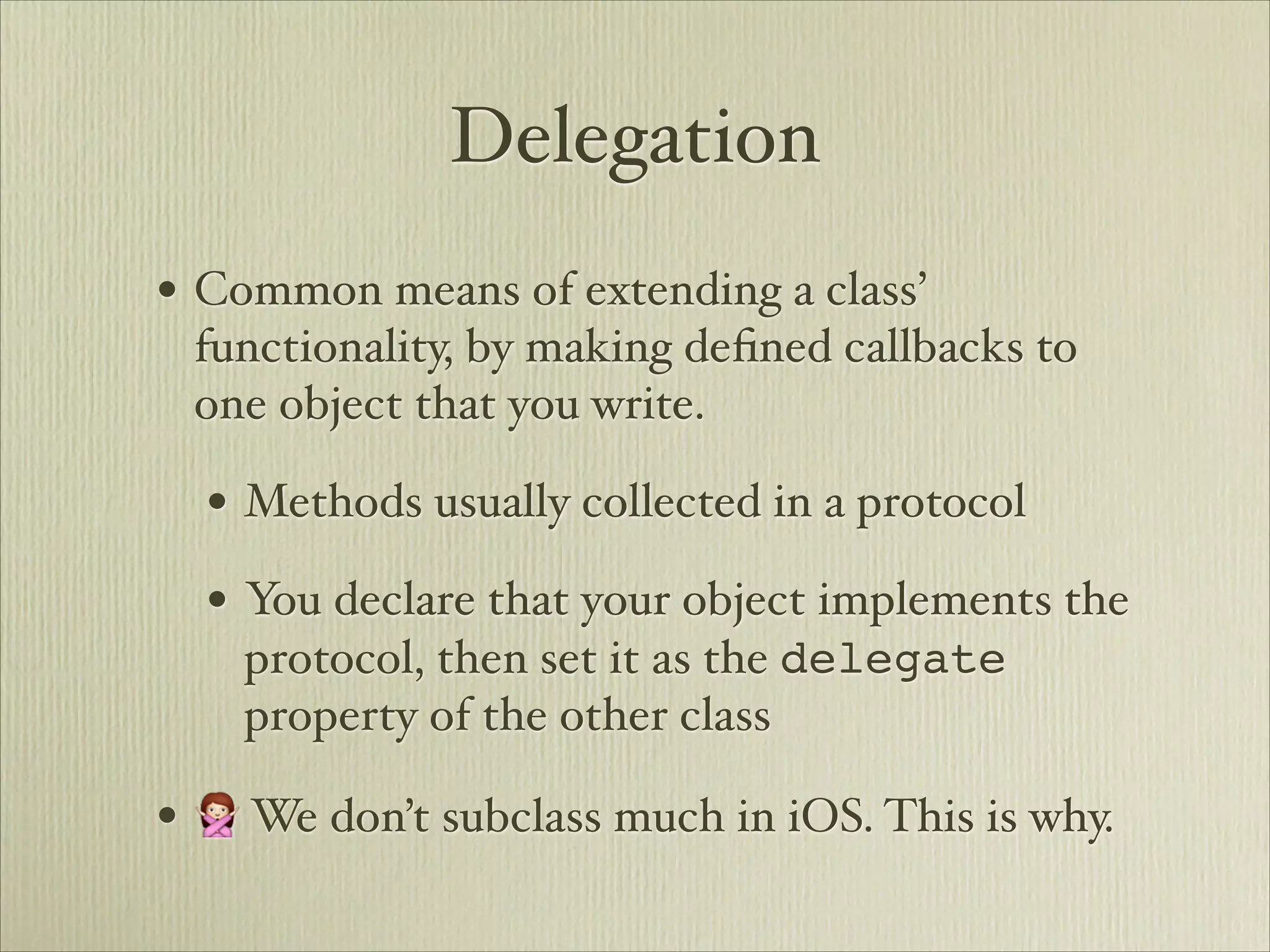
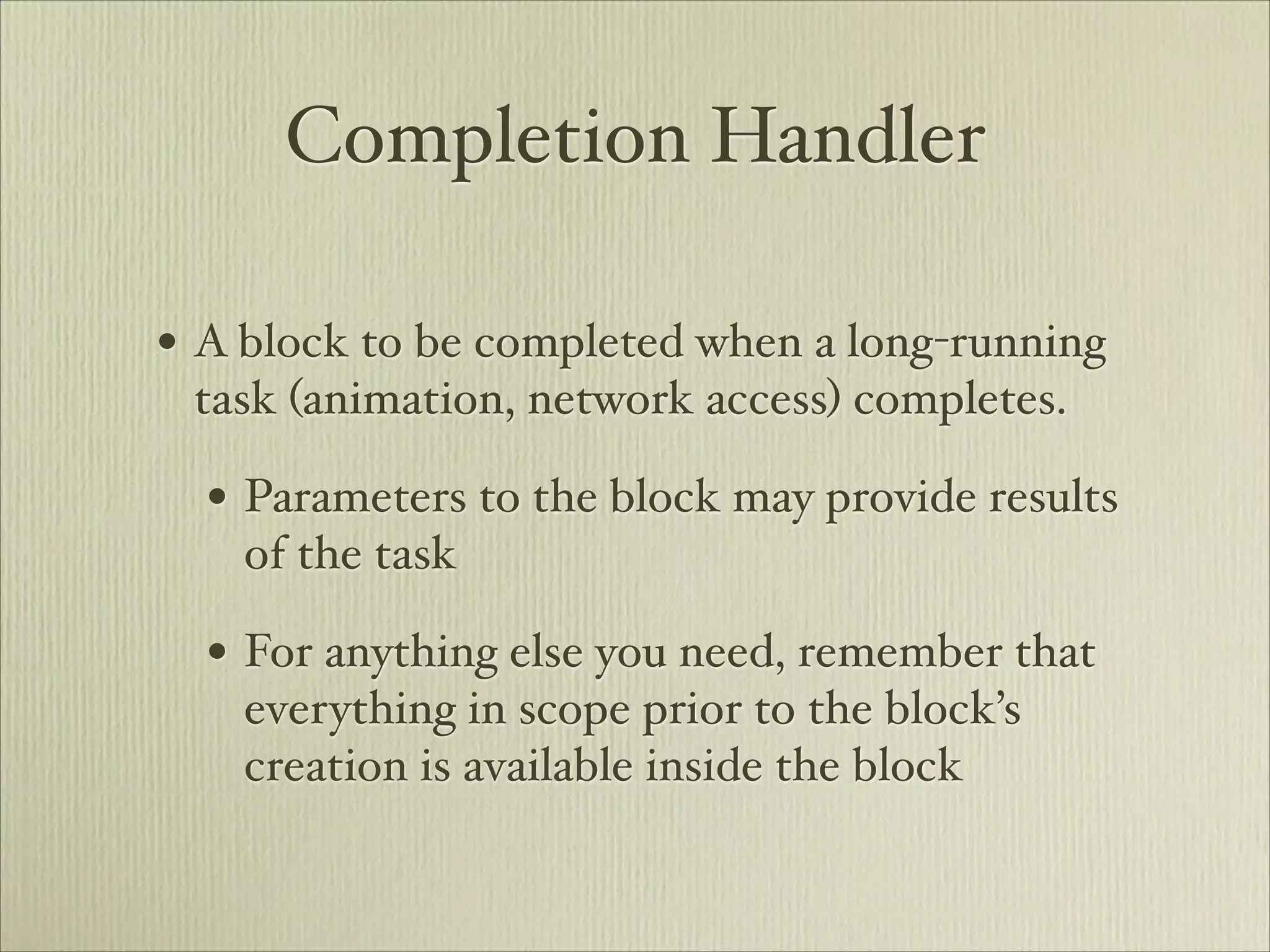
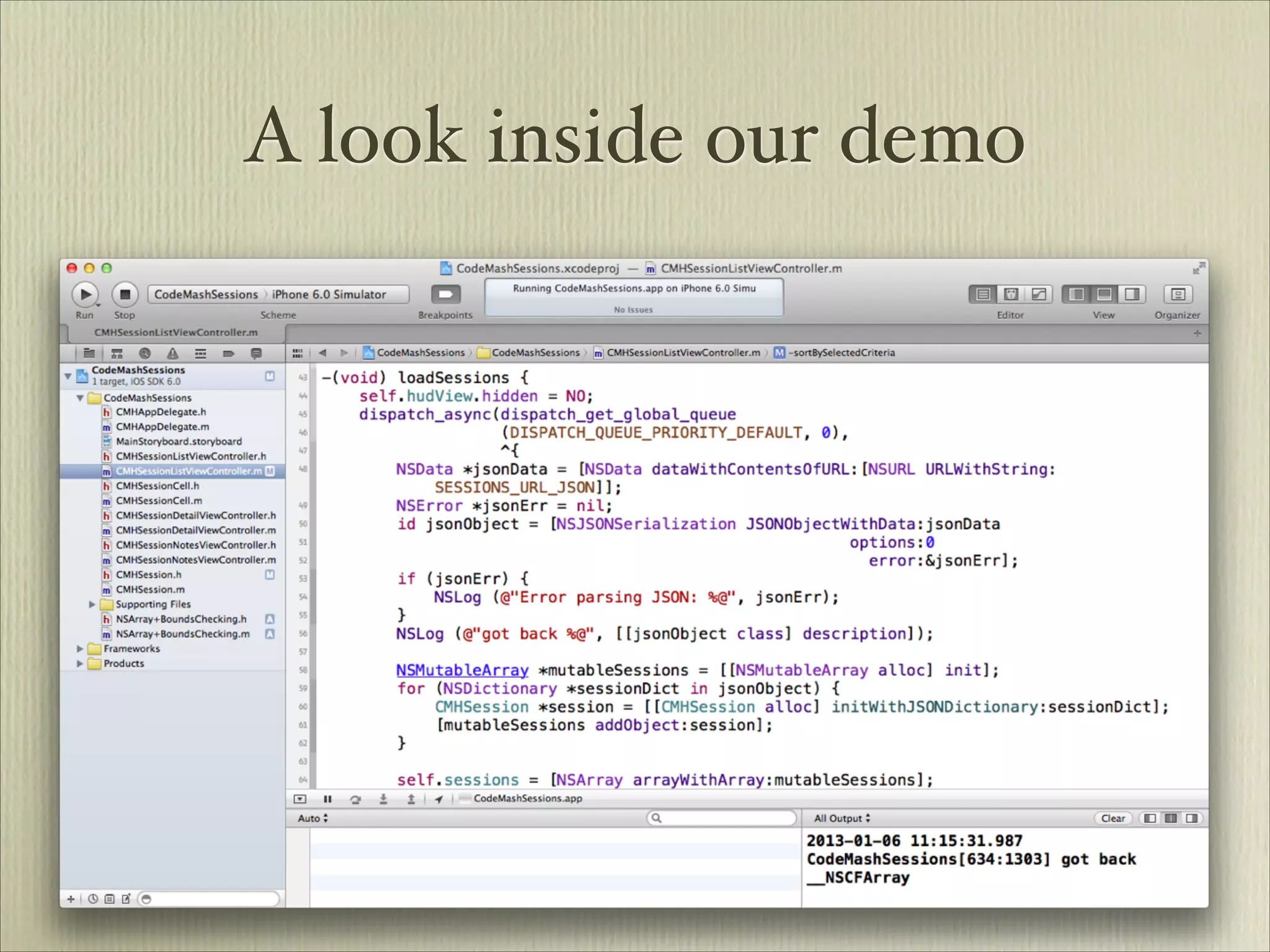
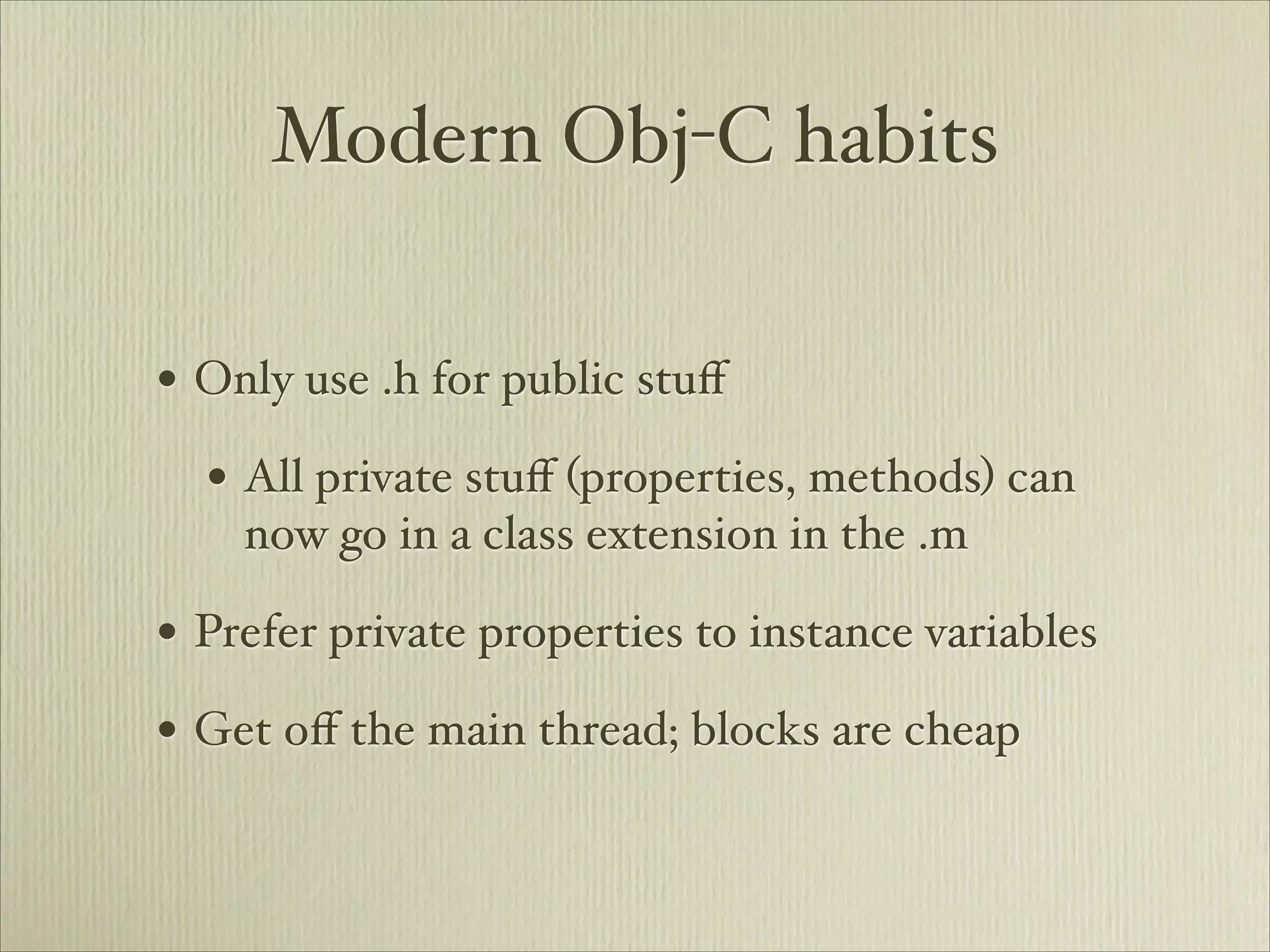
![Old Habits Die Hard
• Obj-C literals in Xcode 4.4
• Arrays: @[…] instead of [NSArray
arrayWithObjects:…]
• Dictionaries @{ name1:value1,
name2:value2, …} instead of
[NSDictionary
dictionaryWithValuesAndKeys:…]
• Accessors: array[i], dict[“key”]](https://image.slidesharecdn.com/obj-c-not-java-130110082546-phpapp01/75/Objective-C-Is-Not-Java-44-2048.jpg)
